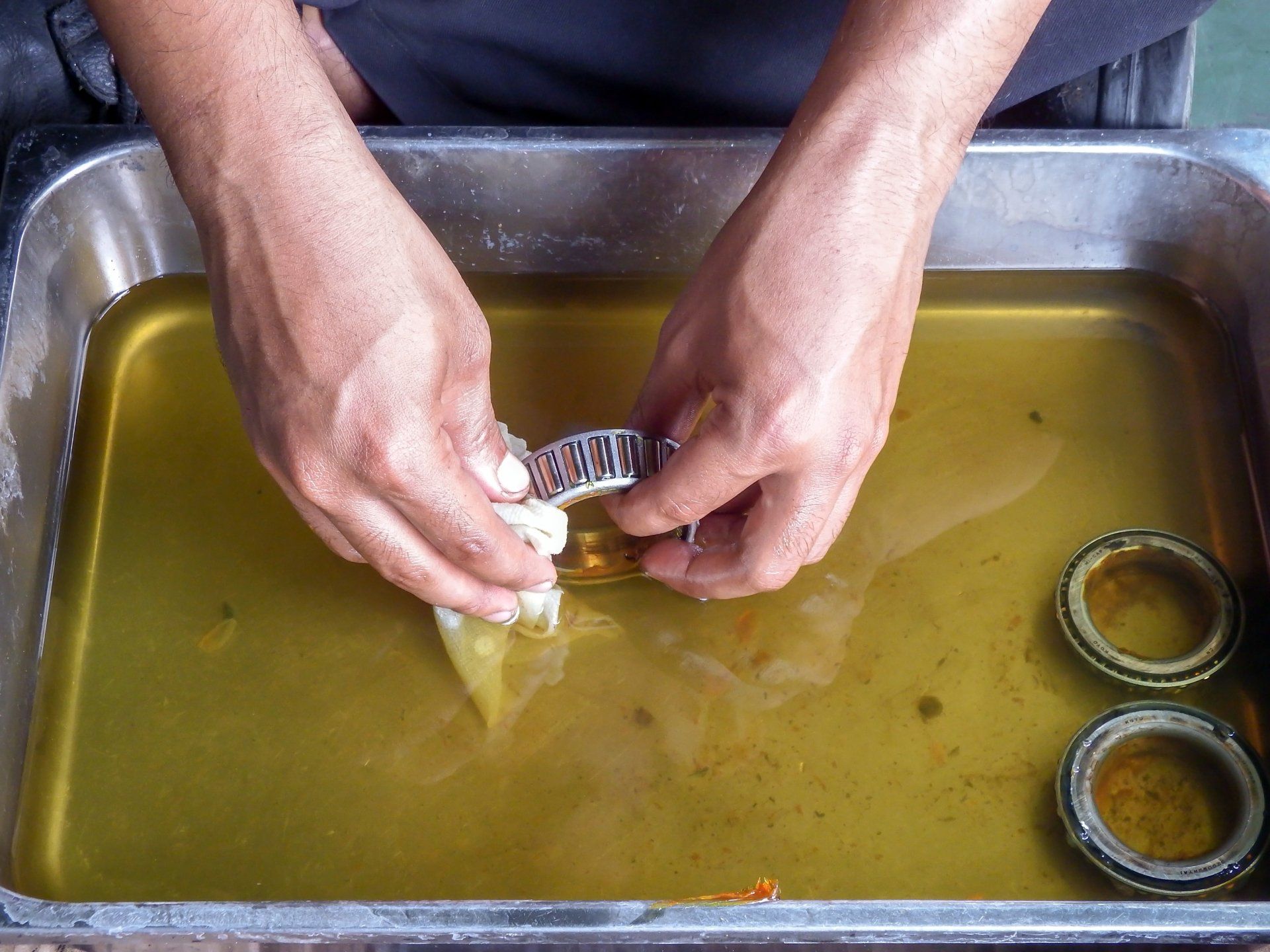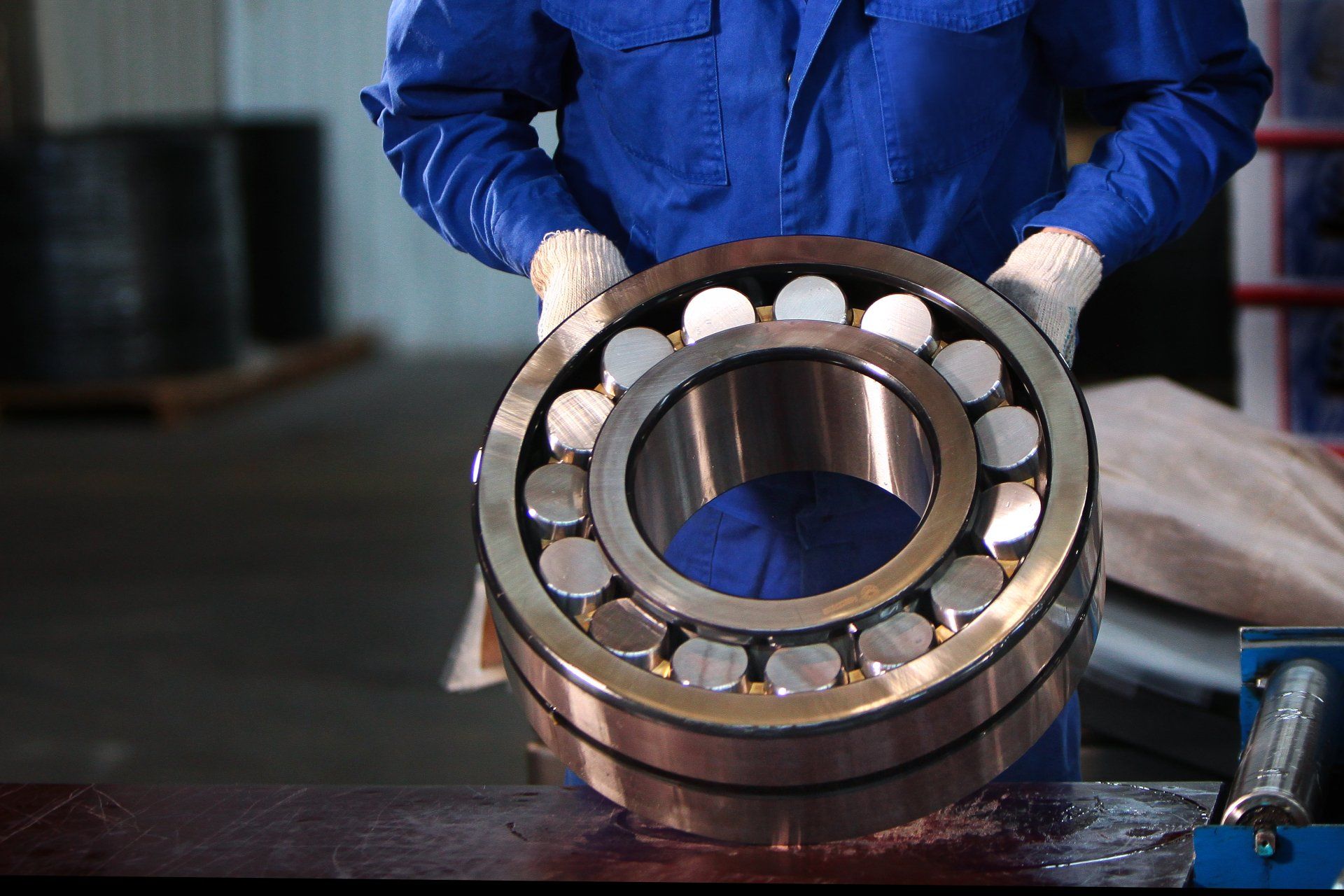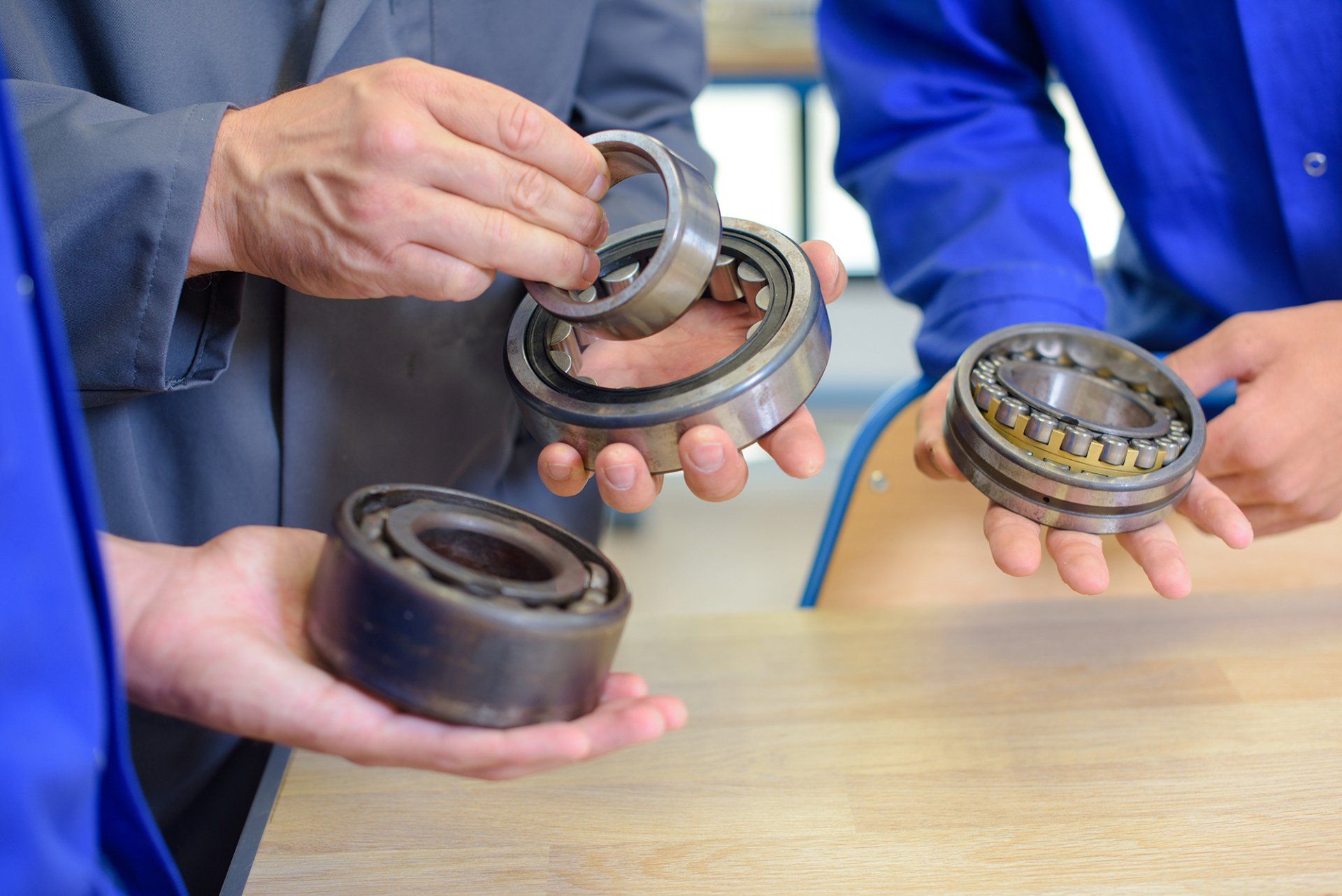COMMON BEARING FAILURES
Understanding why a bearing has failed is one of the best ways to prevent the same failure from happening again. We list the most common bearing failures to help you decide what has happened with your bearing.
INSTRUCTIONS: The gallery below looks at each failure type with a slideshow of images. Use the red arrow to reveal a general description for each slideshow, and use the grey left/right arrows to swipe through the slideshow. Note, the captions will change with each new image.
Send us your photos of failed or damaged bearings through this website for analysis. Just click through to our contact page, where you will find the facility to attach and upload images alongside a message, for our team to examine. We'll get back to you with our initial thoughts and advise on how best to investigate the damage or failure.
UPLOAD YOUR PHOTO
COMMON BEARING FAILURES
Understanding why a bearing has failed is one of the best ways to prevent the same failure from happening again. We list the most common bearing failures to help you decide what has happened with your bearing.
INSTRUCTIONS: The gallery below looks at each failure type with a slideshow of images. Use the red arrow to reveal a general description for each slideshow, and use the grey left/right arrows to swipe through the slideshow. Note, the captions will change with each new image.
Send us your photos of failed or damaged bearings through this website for analysis. Just click through to our contact page, where you will find the facility to attach and upload images alongside a message, for our team to examine. We'll get back to you with our initial thoughts and advise on how best to investigate the damage or failure.
UPLOAD YOUR PHOTO
Contact Us
We will get back to you as soon as possible.
Please try again later.
-
BEARING FLAKING OR WEARING FATIGUE
Flaking due to rolling fatigue occurs when small pieces of bearing material are lifted and broken off the smooth surface of the raceway or the rolling elements. This flaking causes regions with a rough and coarse texture.

Slide title
Fatigue damage in a loaded zone of a
tapered roller bearing inner ring
Button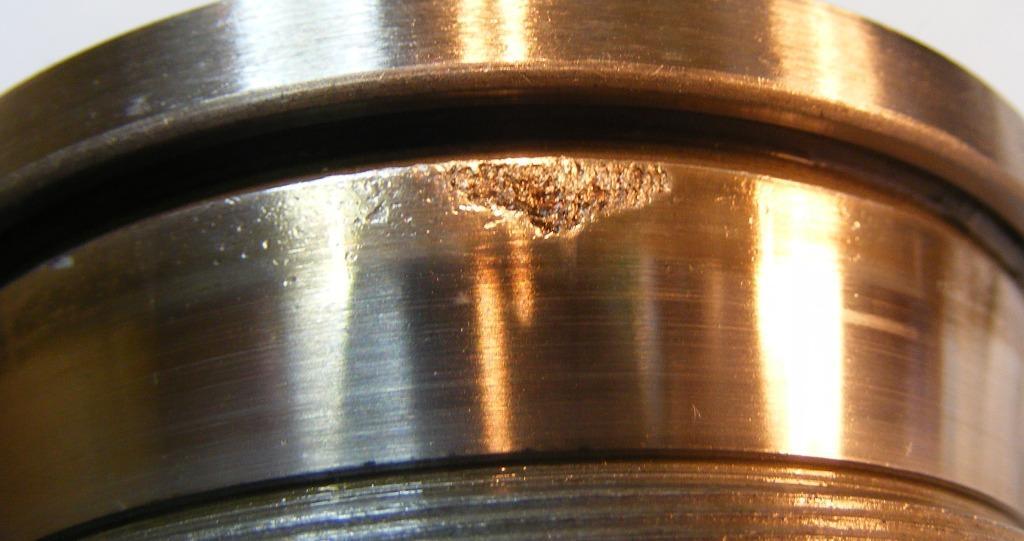
Slide title
Flaking on the edge of a tapered roller inner ring
Button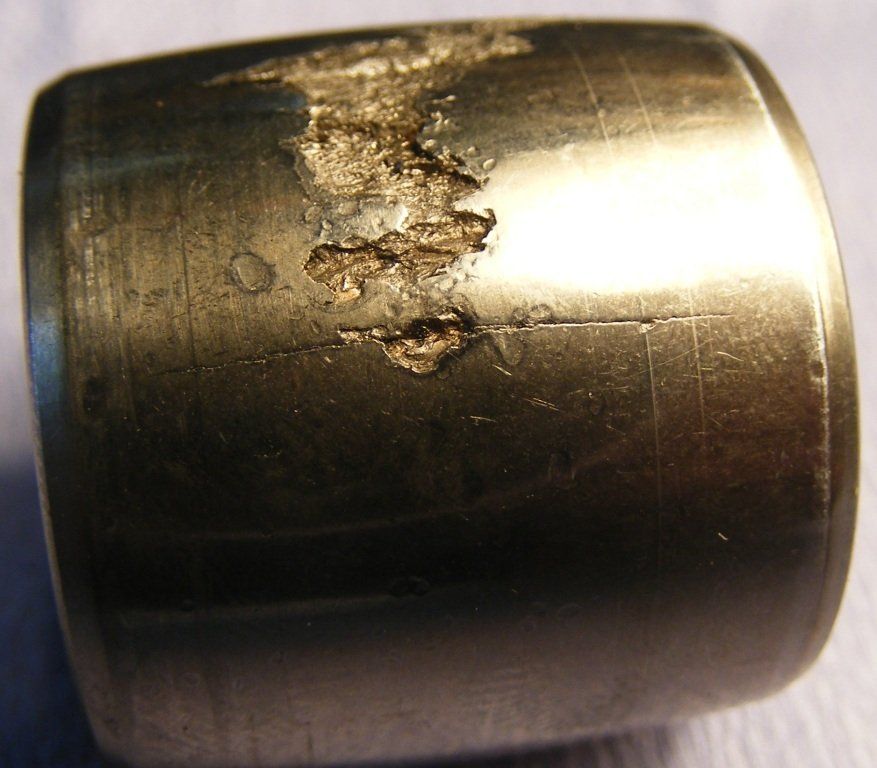
Slide title
A spherical roller damaged as a result of flaking and fatigue
Button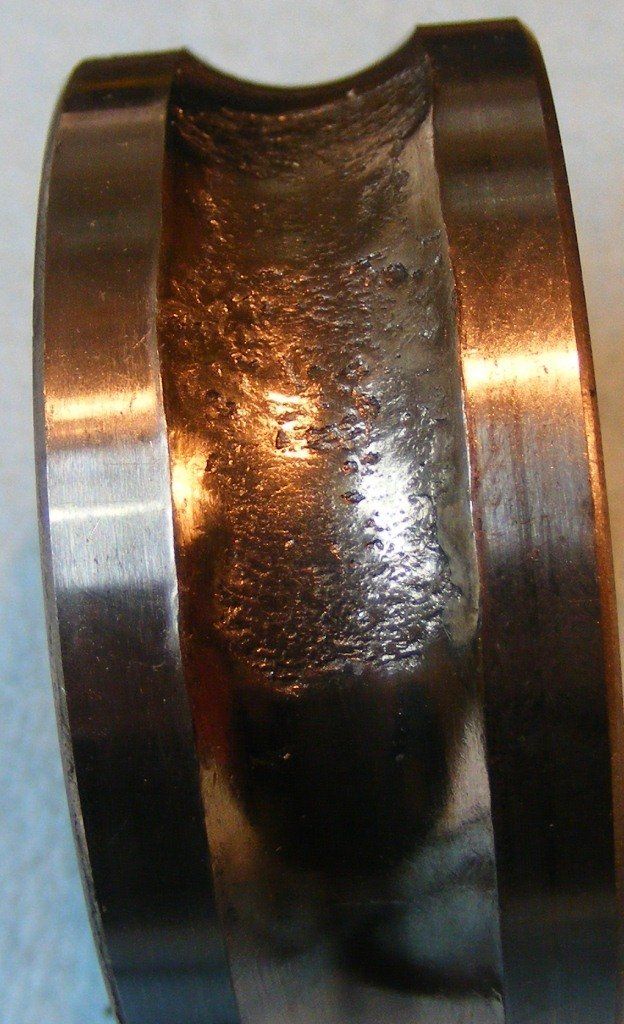
Slide title
Flaking on a ball bearing outer ring raceway
Button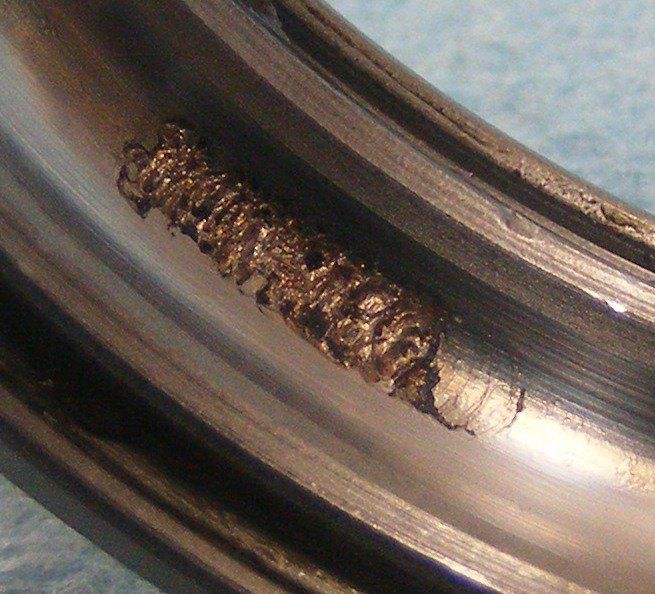
Slide title
Flaking on a ball bearing outer ring raceway
Button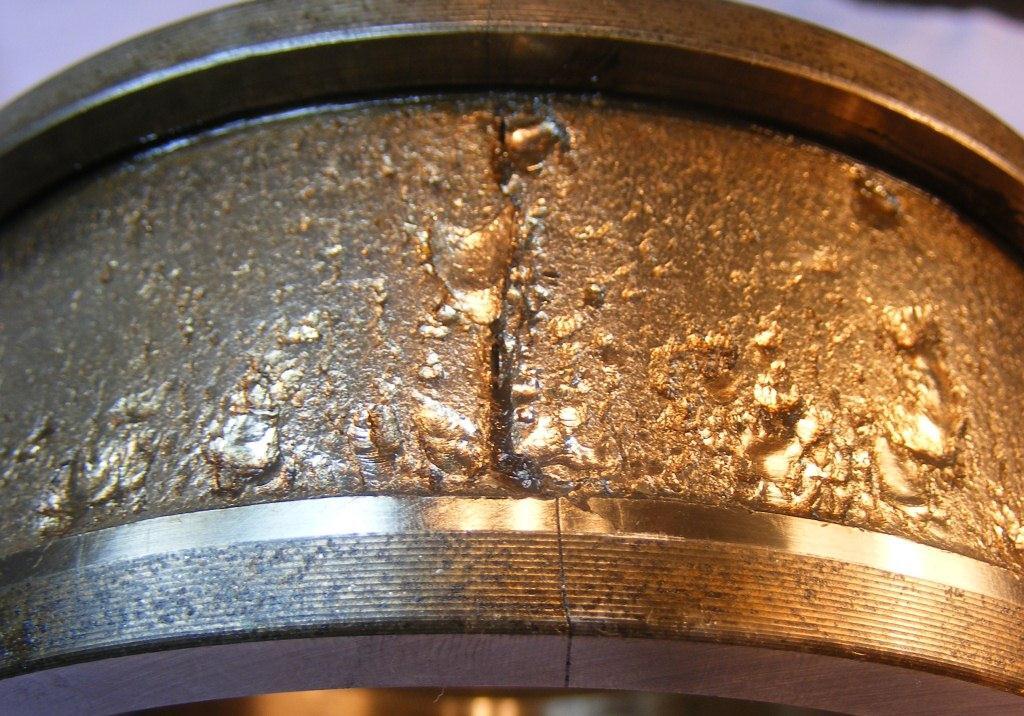
Slide title
Fatigue at both sides of a crack in a Tapered roller cone
Button
-
BEARING PEELING
Dull or cloudy spots appear on the raceway surface along with light wearing. Tiny microscopic cracks are generated downward from these cloudy spots to a depth of 5-10 μm. Small particles of material then peel from the surface with areas of minor flaking starting to occur.
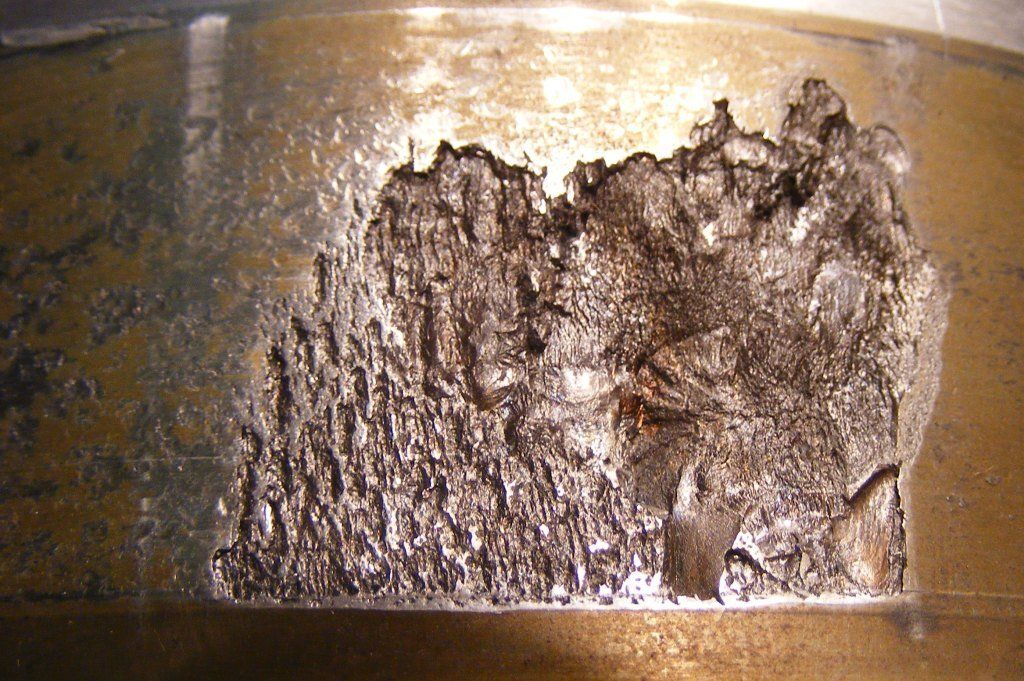
Slide title
A spherical roller raceway with surface material peeled away
Button
-
BEARING SCORING
Scoring is surface damage due to accumulated small seizures caused by sliding under improper lubrication or severe operating conditions. Linear damage appears circumferentially on the raceway and roller surfaces. Cycloidal shaped damage on the roller ends and scoring on the rib surface contacting roller ends also occur.
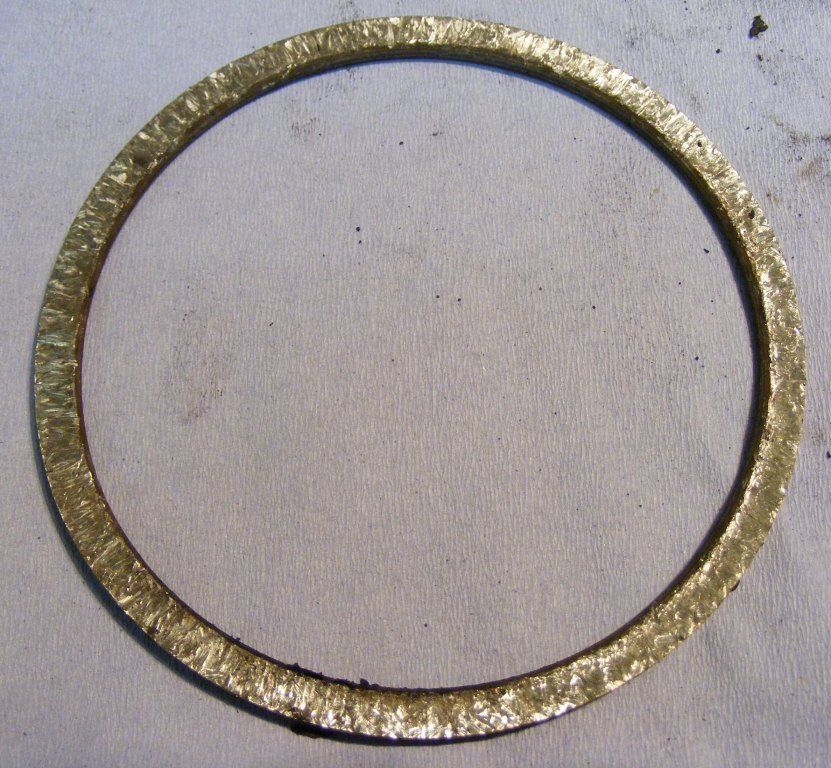
Slide title
A spherical roller central divider scored as a result of an ineffective lubricant film thickness being present
Button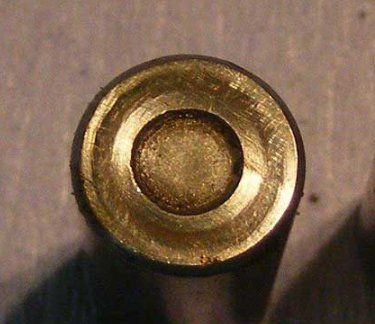
Slide title
A prominent scoring mark caused by a lack of radial clearance during service rotation. Swirl shaped scuffing and scoring on the ends of a failed taper roller bearing
Button
-
SMEARING OF THE BEARING SURFACE
Smearing is surface damage which occurs from a collection of small seizures between bearing components caused by oil film rupture and/or sliding. Surface roughening occurs along with melting.
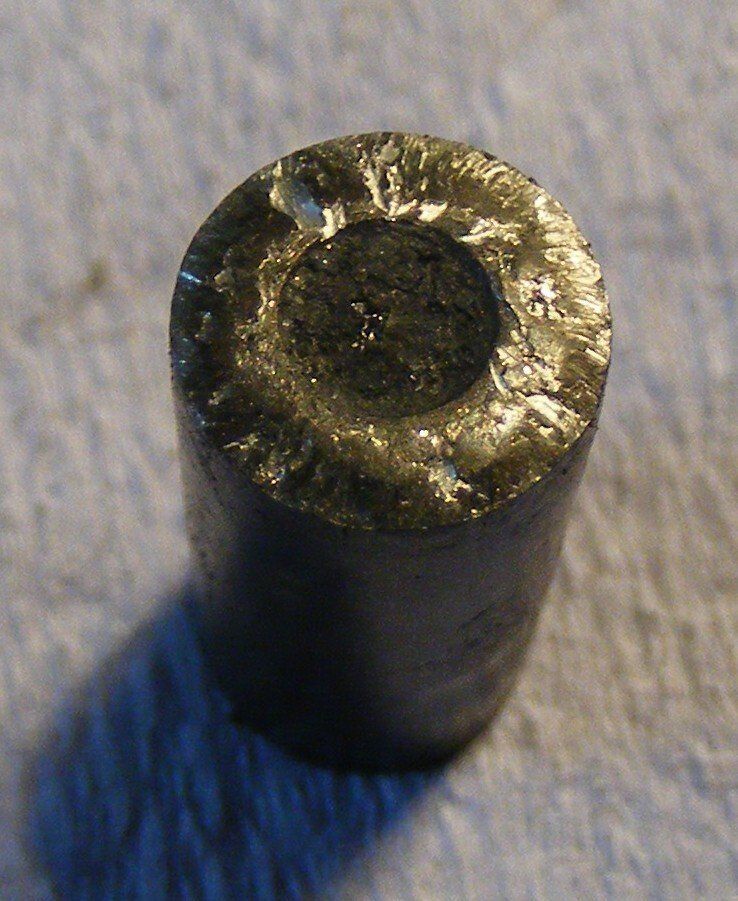
Slide title
A smeared end of a tapered rolled as a result of excessive sliding contact against the roller retaining rib
Button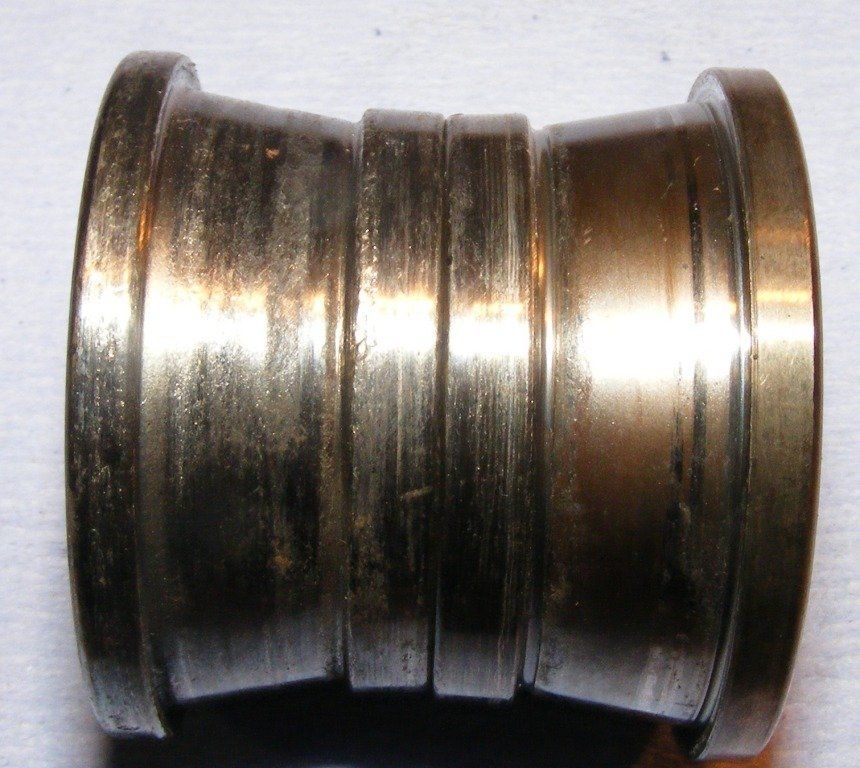
Slide title
Smearing on the inner races of a duplex tapered roller
Button
-
FRACTURE OF THE BEARING
Fracture refers to small or large metallic pieces which were broken off due to excessive load or shock load acting locally on a rolling element, rib or section of a raceway ring.

Slide title
Fracture of a spherical roller bearing outer ring as a result of a high thrust impact load causing cracks
Button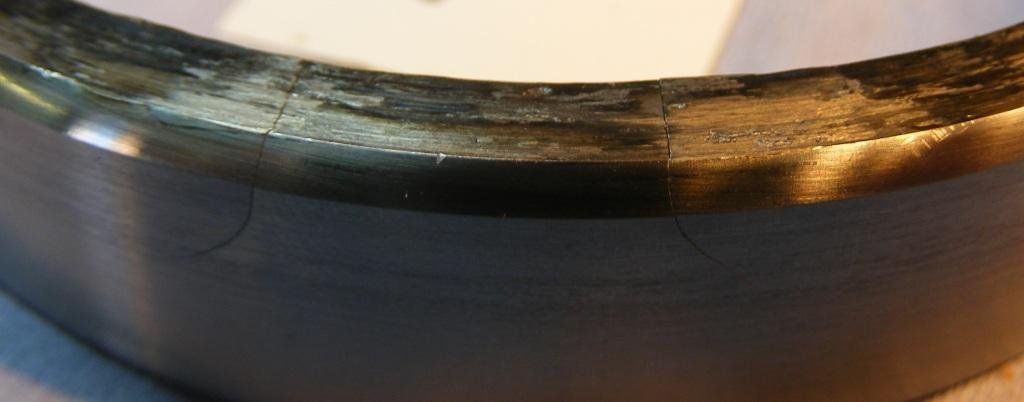
Slide title
Cracking in the outer ring of an angular contact bearing
Button
-
CRACKS IN THE RACEWAY RING AND ROLLING ELEMENTS
Cracks in the raceway ring and rolling elements. Continued use under this condition leads to larger cracks or fractures
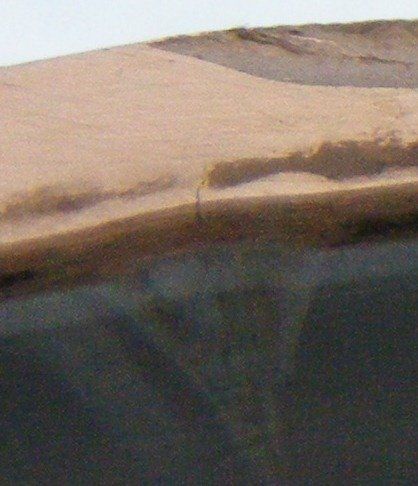
Slide title
Outer ring crack caused by a heavy impact through the rolling elements
Button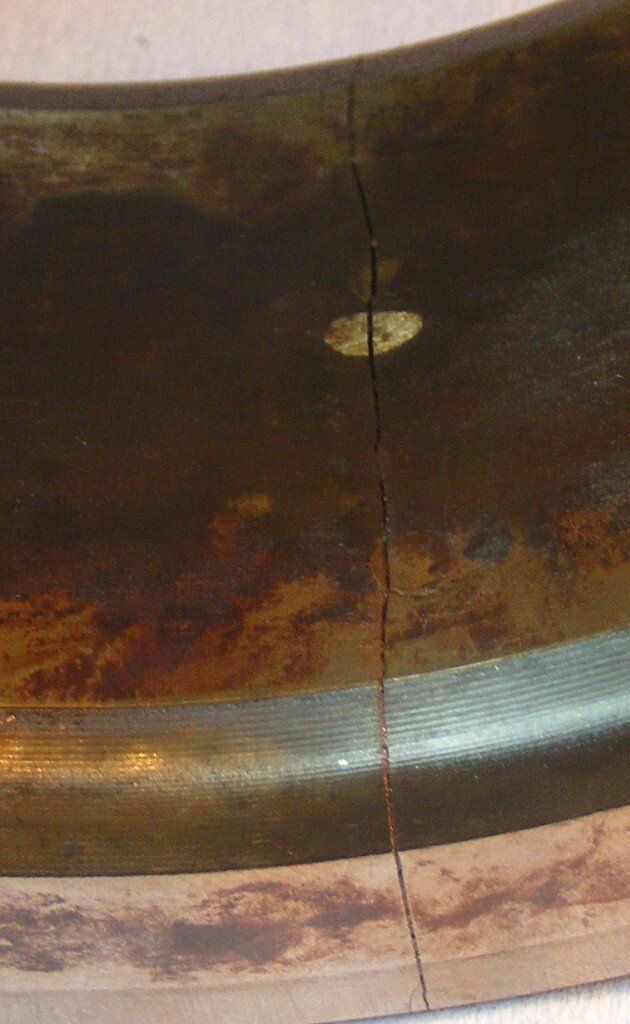
Slide title
Inner ring crack caused by excessive hoop stress
Button
-
BEARING CAGE DAMAGE, DEFORMATION, FRACTURE AND WEAR
Cage damage includes: Cage deformation, Fracture and Wear Fracture of cage pillars.
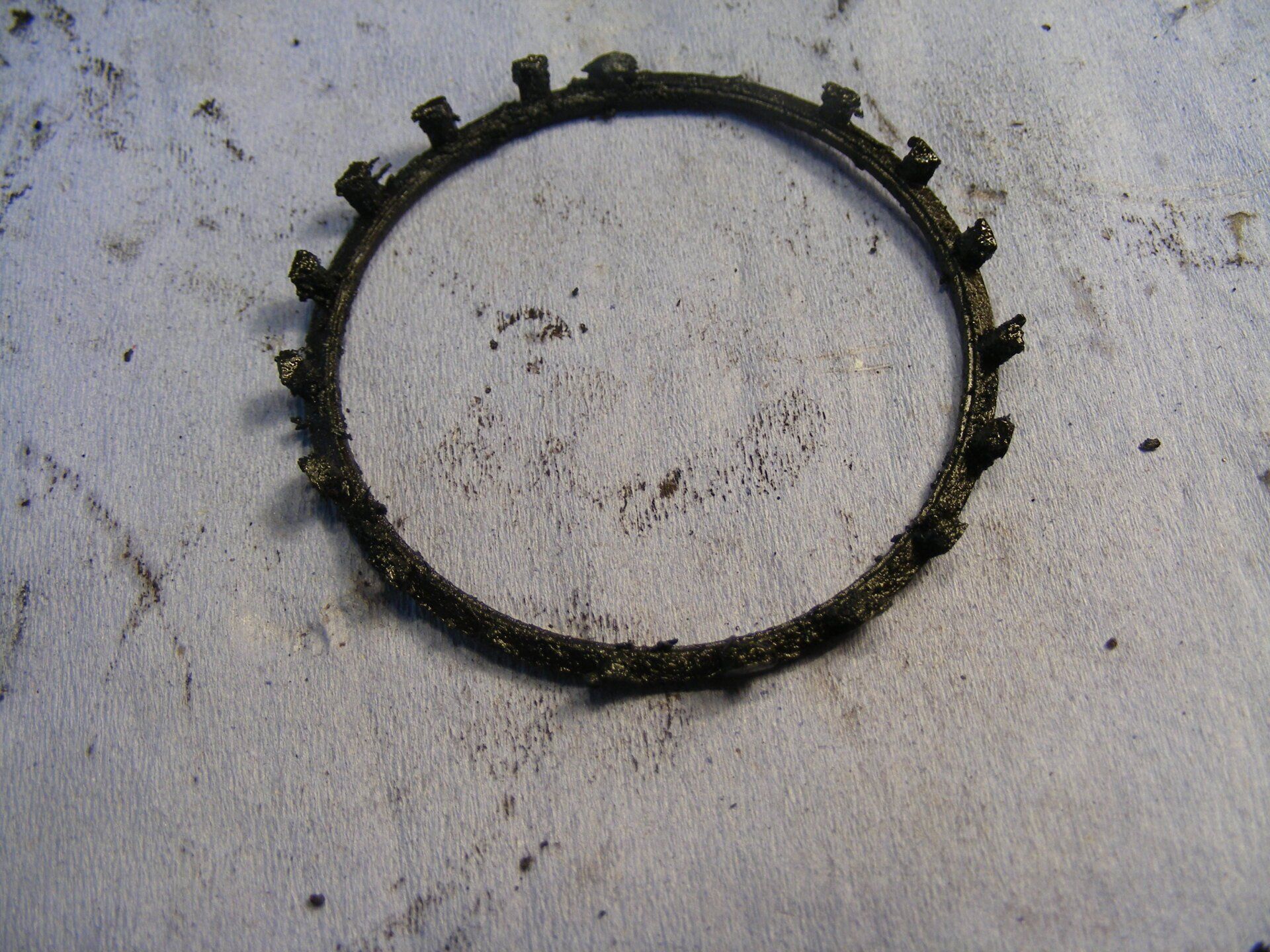
Slide title
Tapered roller cage with worn side pillars caused by the bearing having run in a reduced lubricant condition
Button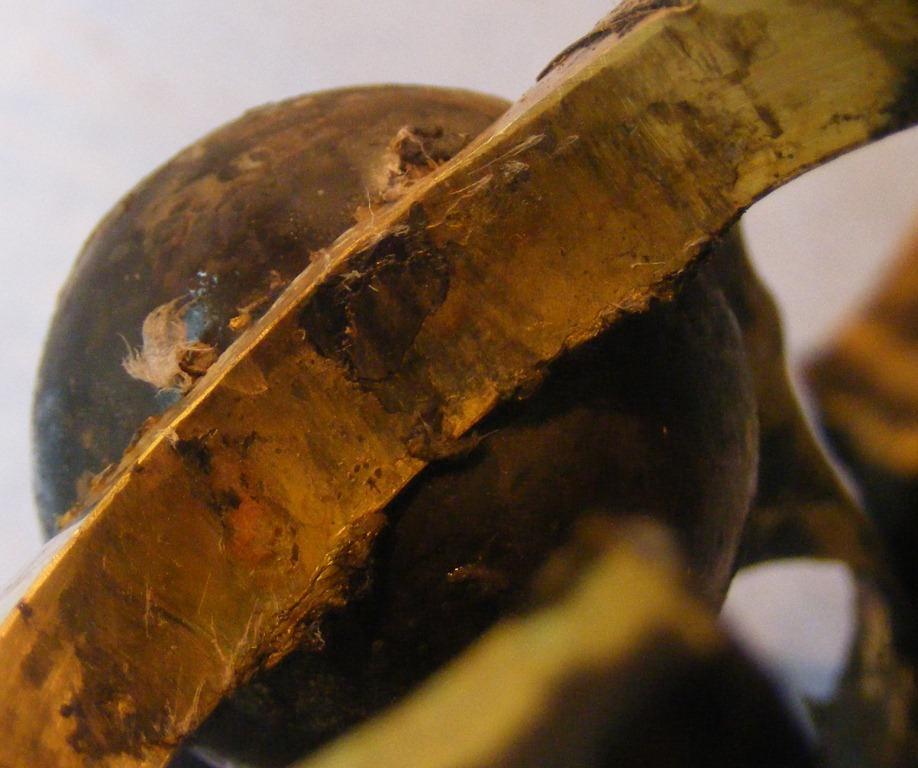
Slide title
Wear in a brass cage pocket due to low lubrication
Button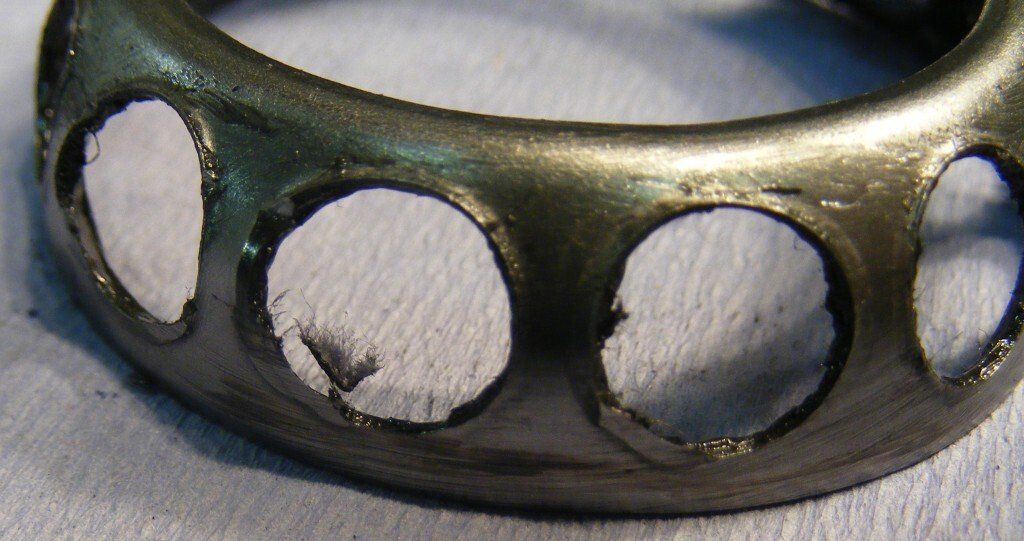
Slide title
An angular contact bearing cage deformed due to rubbing contact with other assembly parts
Button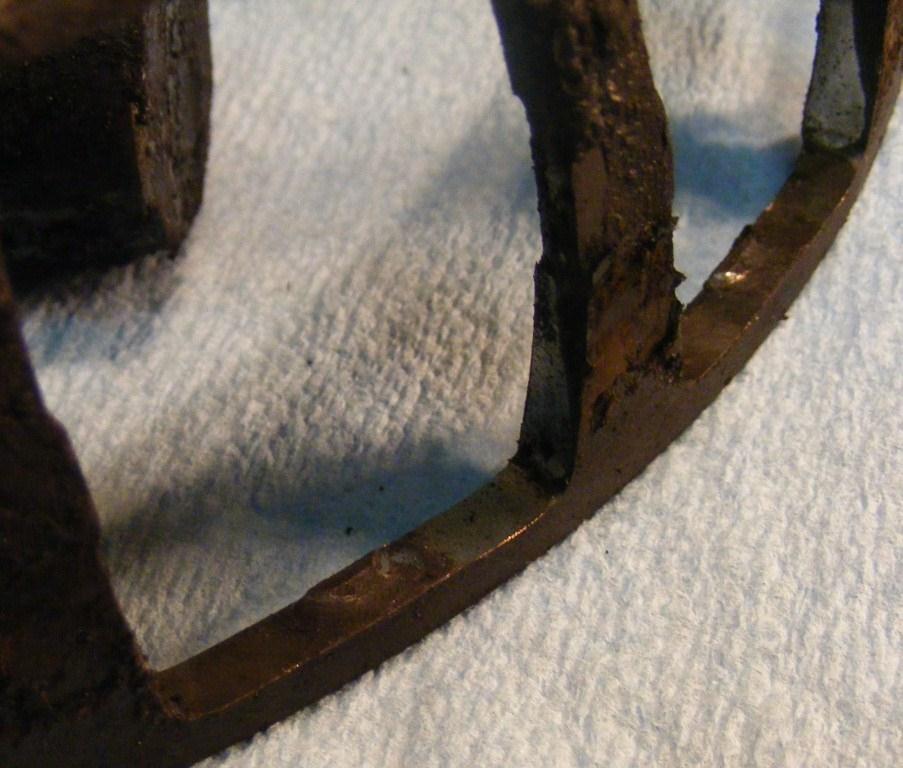
Slide title
Wear of pocket surface. Brass cage pillar wear caused by lack of lubrication
Button
-
PITTING OF THE BEARING ON THE ROLLING ELEMENT OR RACEWAY
Pitting has a dull lustre and appears on the rolling element surface or raceway surface.

Slide title
Light pitting as seen on the two sides of a spherical roller inner ring
Button
Slide title
Pitting around the circumference of a cylindrical roller inner ring
Button
-
DENTING AND "PEAR SKINNING" OF THE BEARING
When Flaking due to rolling fatigue occurs, small pieces of bearing material become trapped in the lubricant and are crushed on the raceways by the rolling elements. This effect can also occur if the lubricant becomes contaminated.
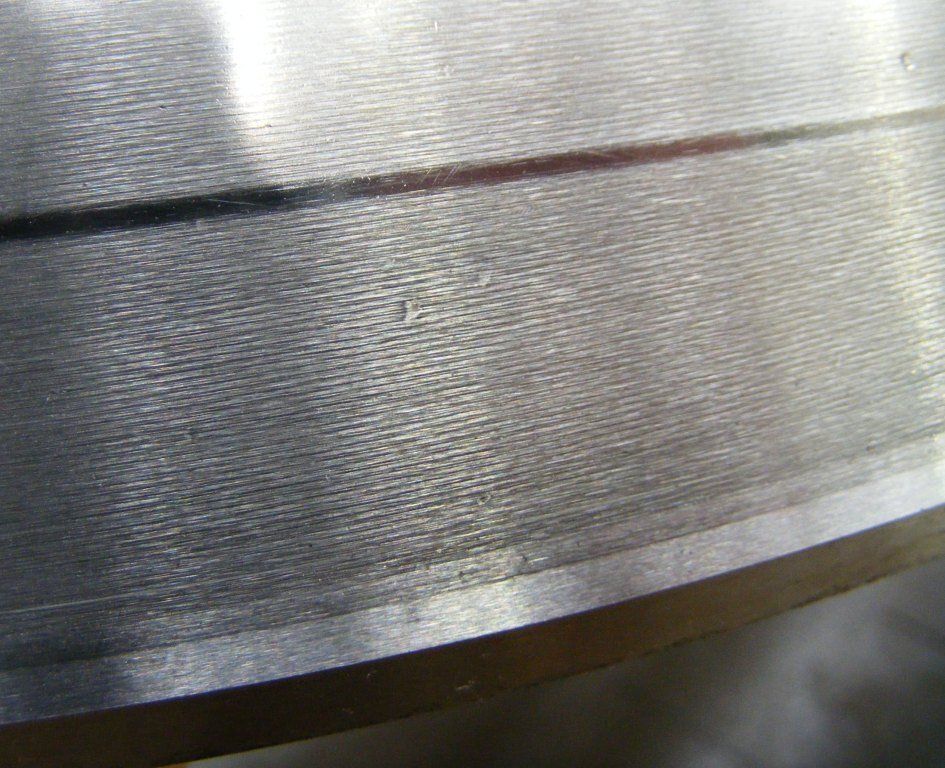
Slide title
Dented cross roller thrust bearing raceway caused by dirt ingress following a strip down and re assembly
Button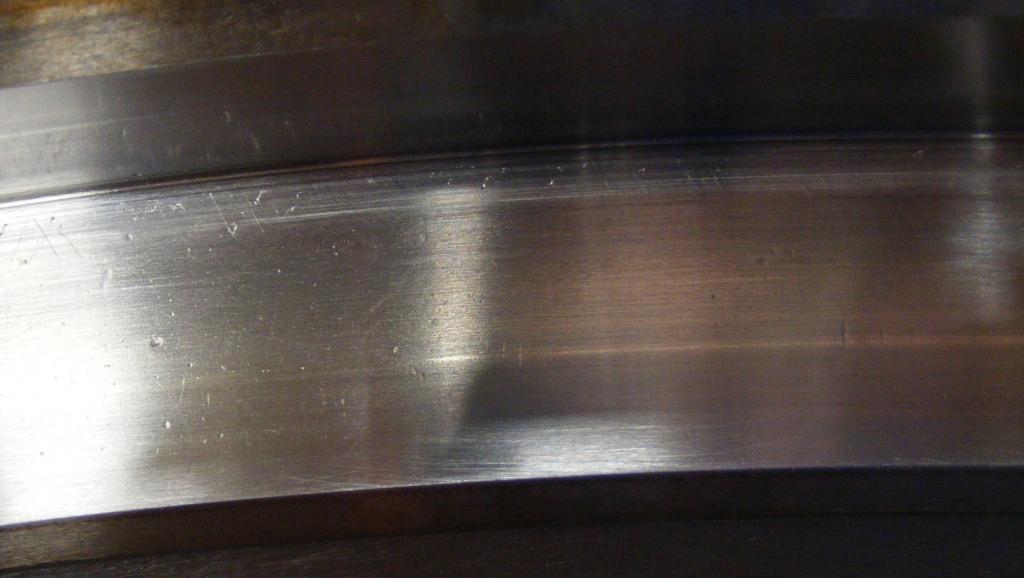
Slide title
Raceway damaged by contaminant in the lubricant
Button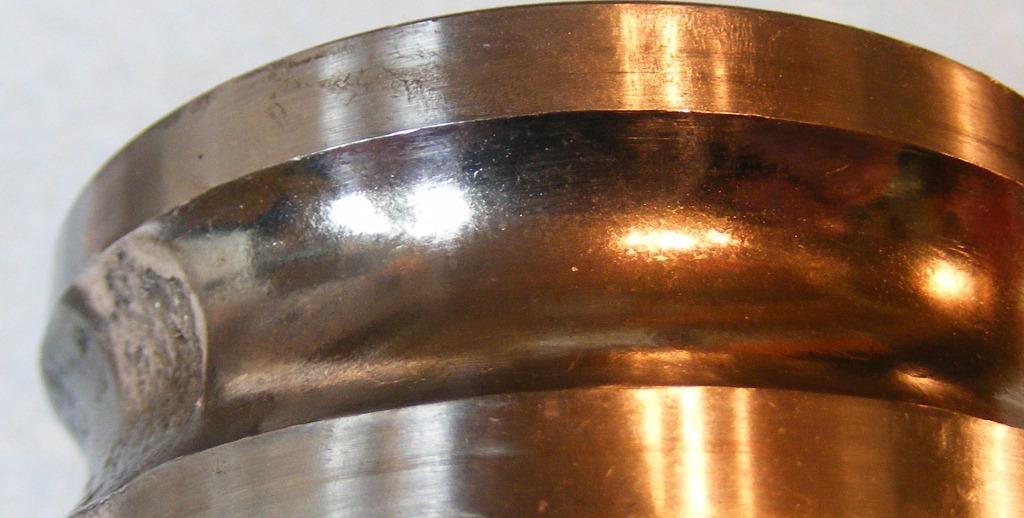
Slide title
Pear skinning caused by metal debris from a fatigue failure being pressed onto the remainder of the contact surface
Button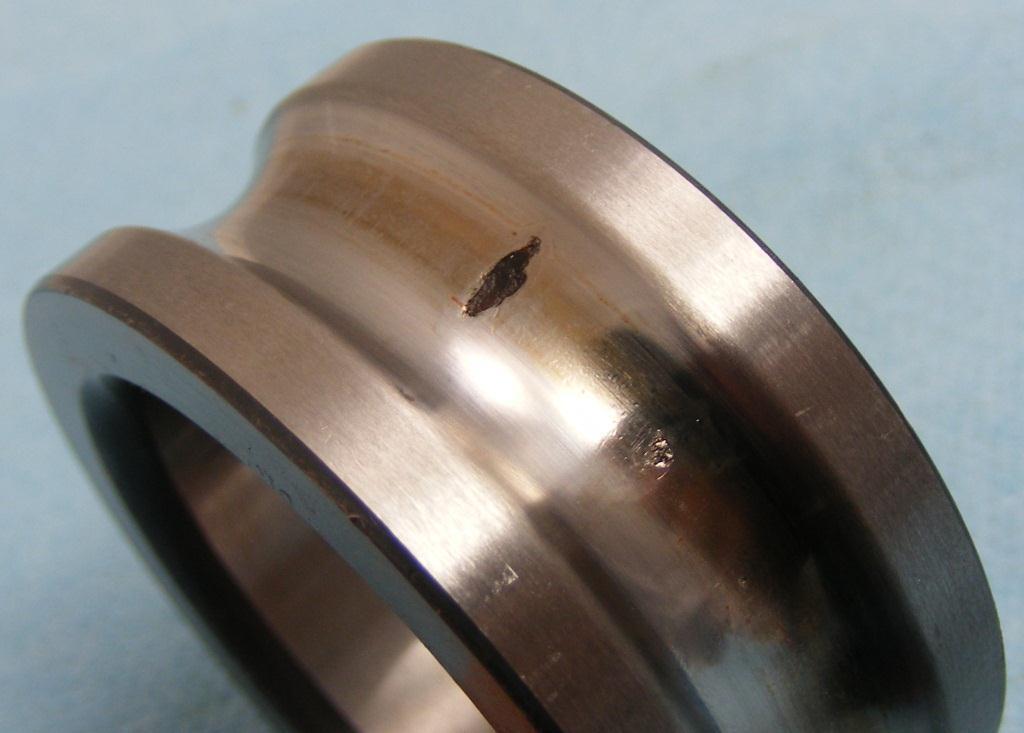
Slide title
Fatigue occurring on a ball bearing inner ring due to stresses induced around an impact dent
Button
-
WEAR OF BEARINGS
Wear is surface deterioration due to sliding friction at the surface of the raceway, rolling elements, roller end faces, rib face, cage pockets, etc.
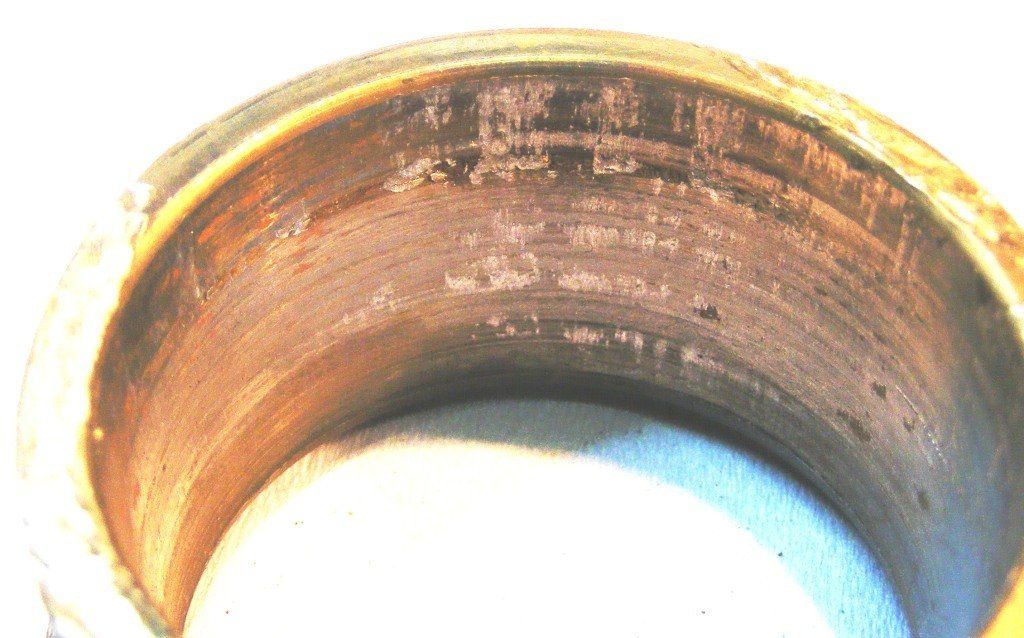
Slide title
Rotation and surface wear in the bore of a tapered roller bearing inner ring. The possible cause being that the shaft was damaged previously allowing movement to occur
Button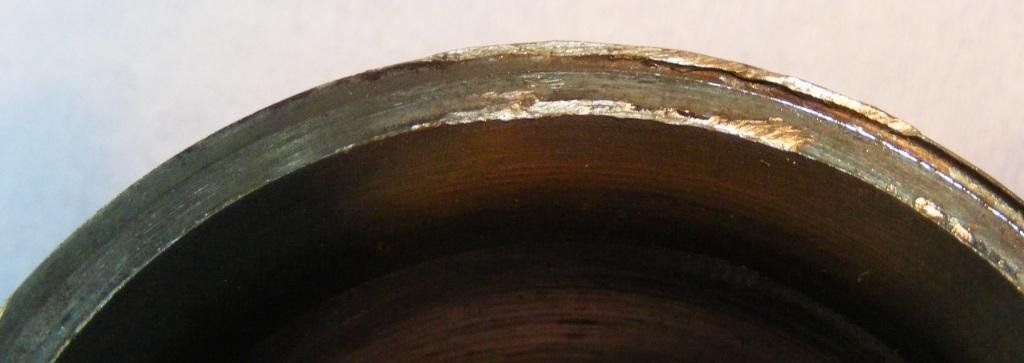
Slide title
Close up of a Tapered Roller nose with heavy burrs and rotational scuffing due to maladjustment of the bearing on the shaft
Button
-
FRETTING OF BEARINGS
Wear occurs due to repeated sliding between the two surfaces. Fretting occurs at fitting surface between raceway rings and the shaft or housing. Fretting corrosion is another term used to describe the reddish brown or black wear patterns often seen on old shafts and worn housings.
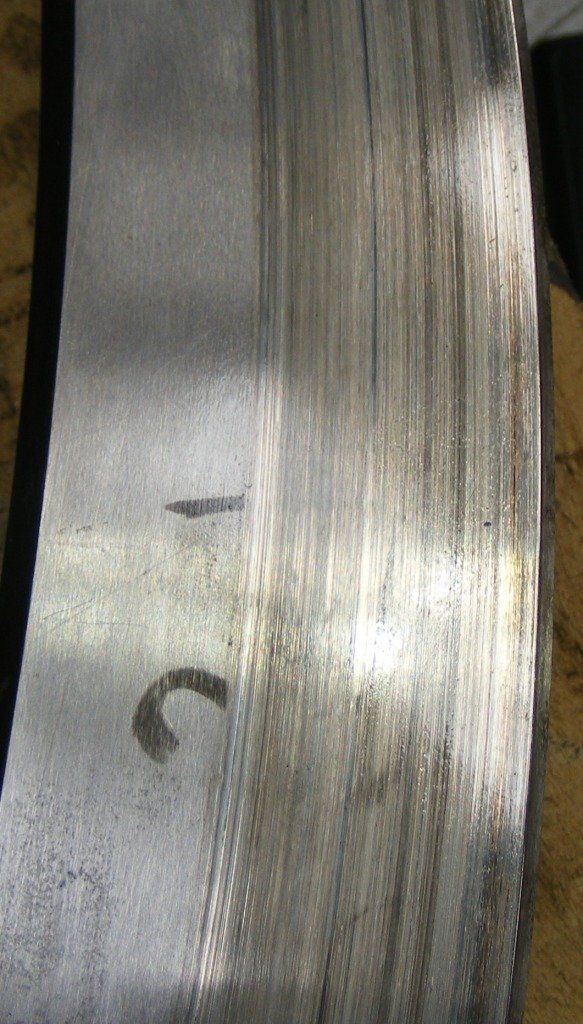
Slide title
Top surface of a thrust bearing showing sliding wear marks to one side of the ring as a result of unintended movement during service
Button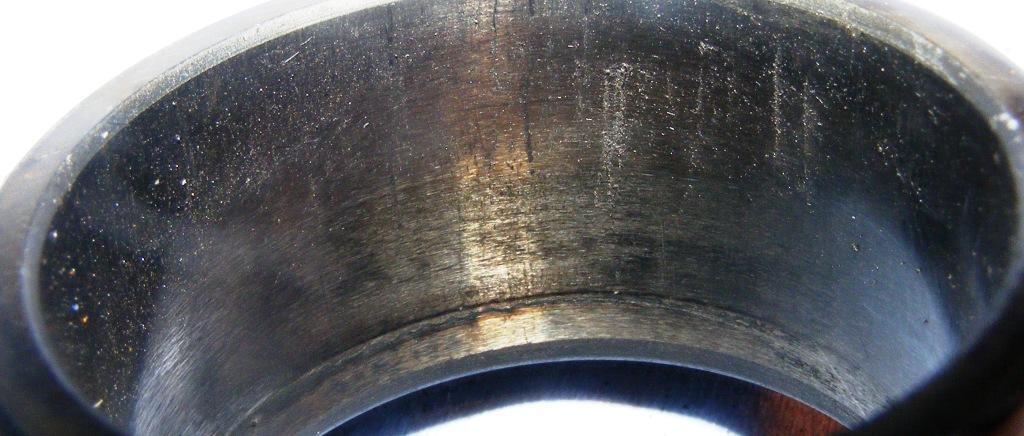
Slide title
Fitting marks and fretting corrosion caused by the bearing vibrating on the shaft
Button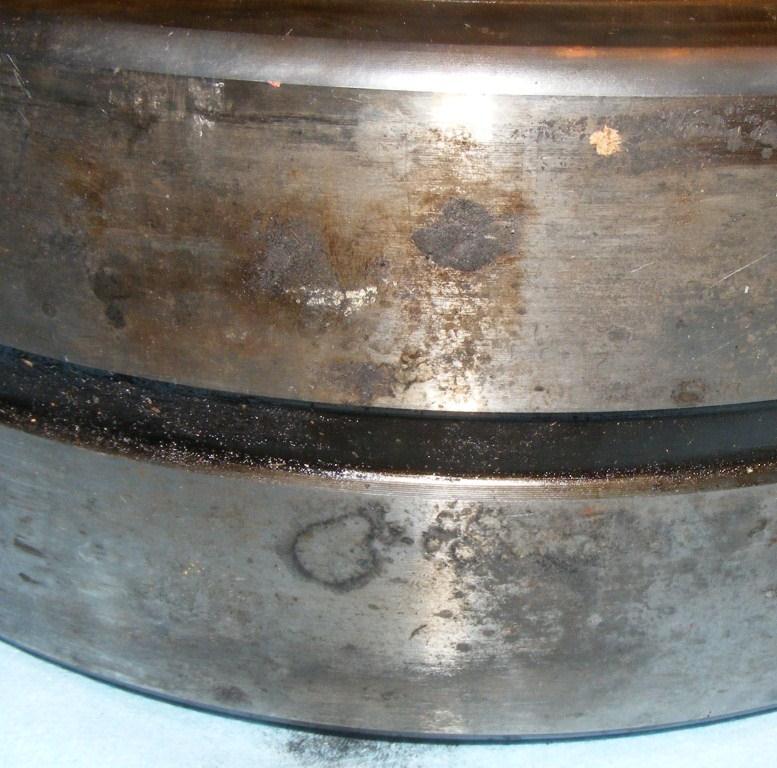
Slide title
Fretting Corrosion and Fitting marks on the outside diameter of a spherical roller outside diameter
Button
-
FALSE BRINELLING
Among the different types of fretting, false brinelling is the occurrence of hollow spots that resemble brinell dents and are due to wear caused by vibration and swaying at the contact points between the rolling elements and raceway.
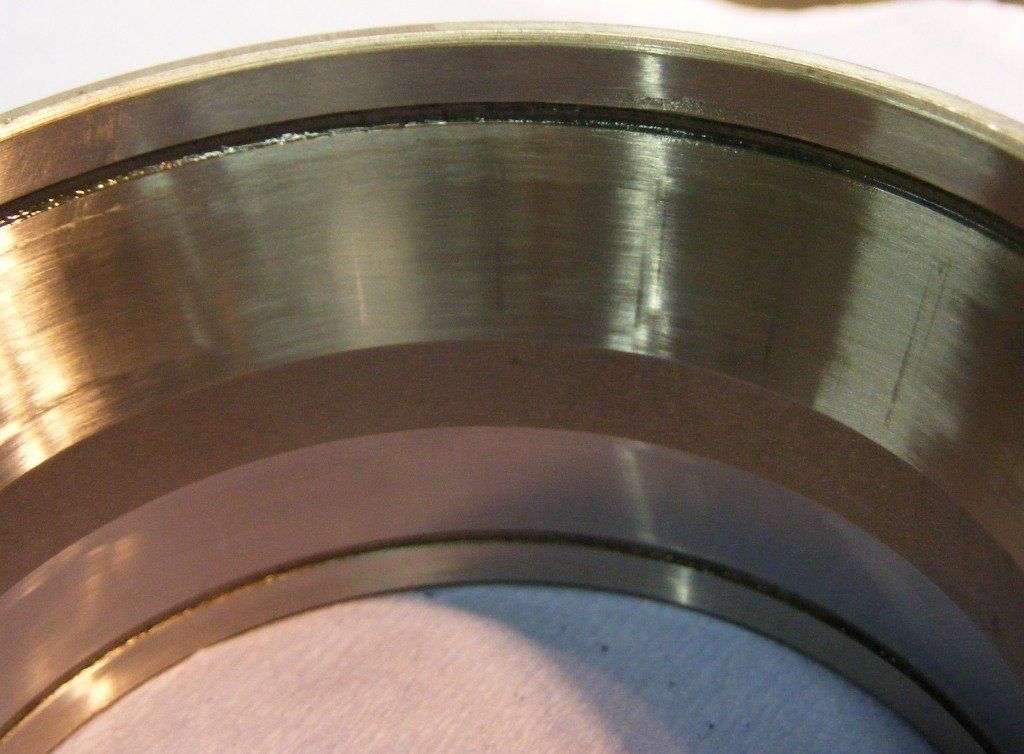
Slide title
False brinelling caused during transportation of the stationary component
Button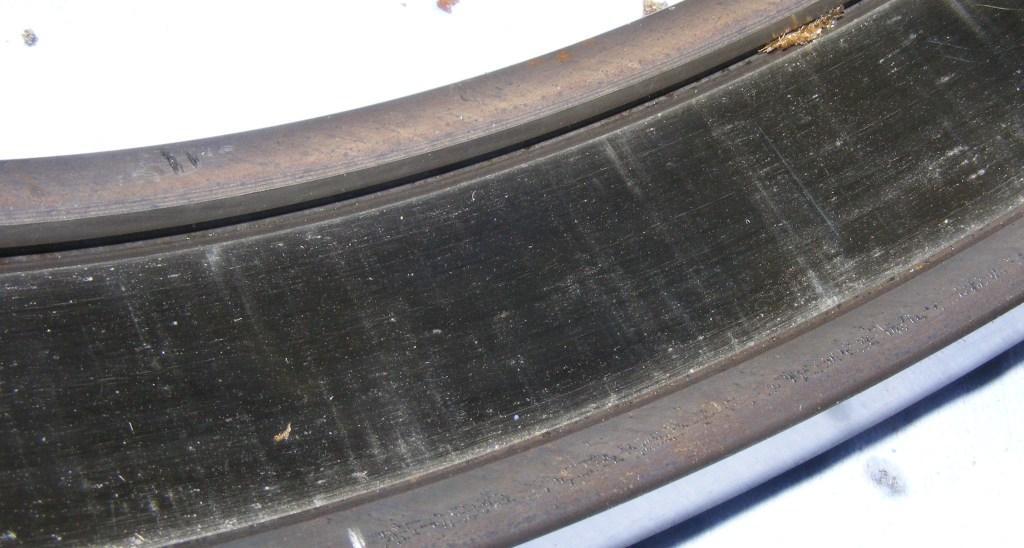
Slide title
False brinelling and scratches likely to have been caused during transportation of inappropriately packed bearings
Button
-
CREEP IN BEARINGS
Creep is the phenomenon in bearings where relative slippage occurs between fitting surfaces and thereby creates a clearance between the surfaces. Creep causes a shiny appearance, occasionally with scoring or wear.
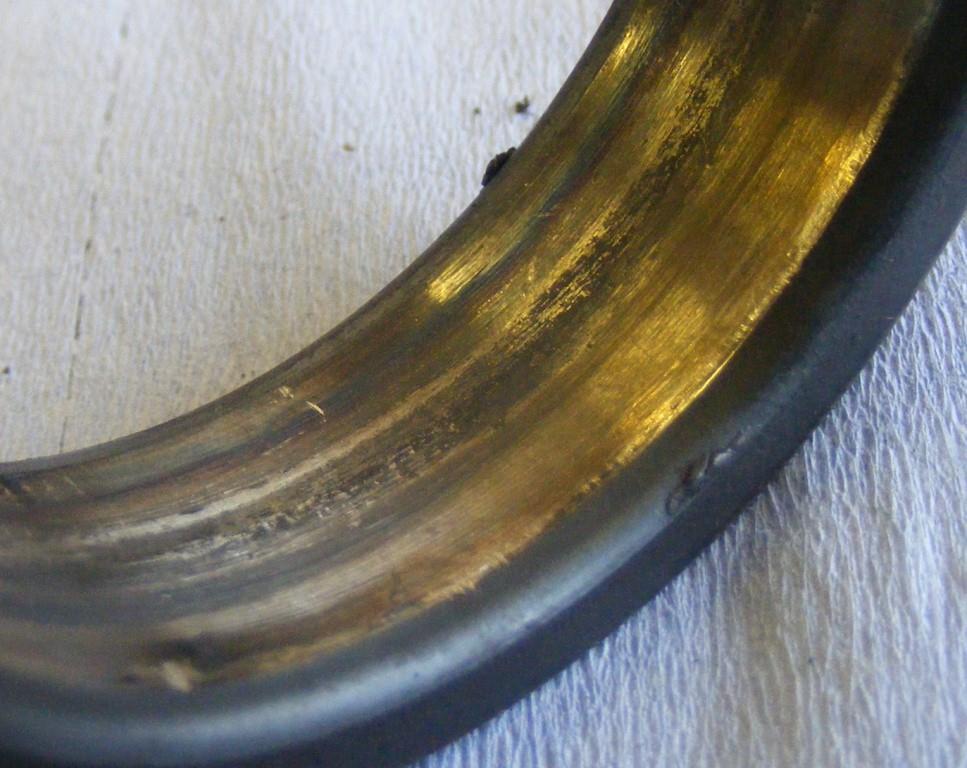
Slide title
Inner ring bore creep due to a worn shaft
Button
-
SEIZURE OF BEARINGS
When sudden overheating occurs during rotation, the bearing becomes discoloured. Then, the raceway rings, rolling elements, and cage will soften, melt and deform as damage accumulates.

Slide title
Tapered Roller Inner Rings distorted as a result of overloading and lack of lubrication
Button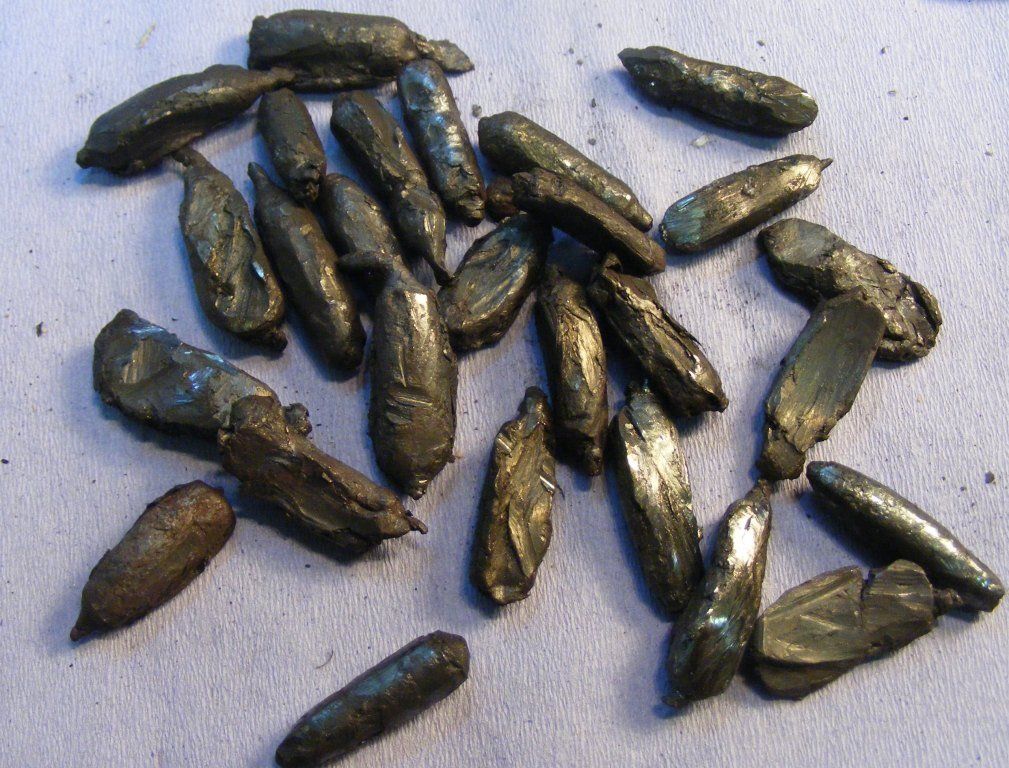
Slide title
The remnants of rollers removed from a seized Taper Roller Bearing
Button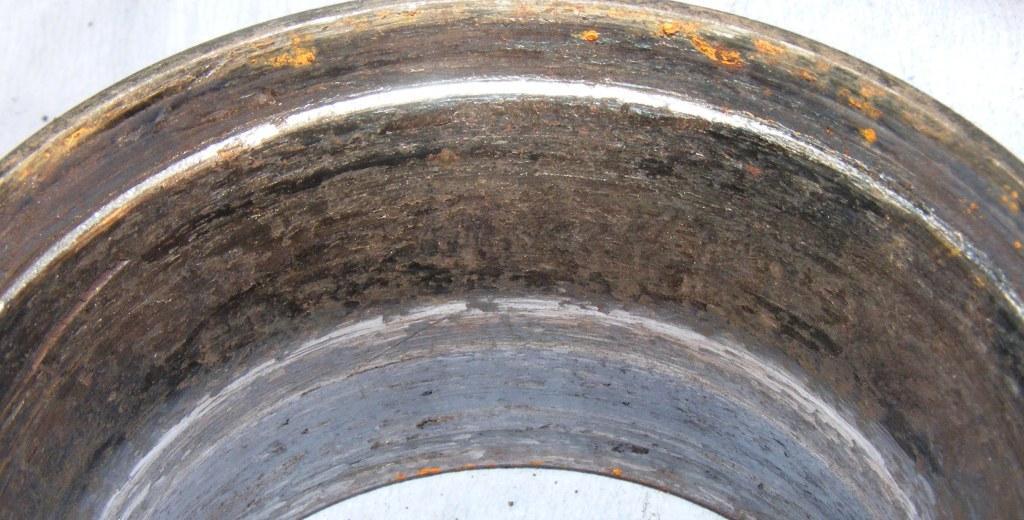
Slide title
Outer raceway from a seized tapered roller bearing
Button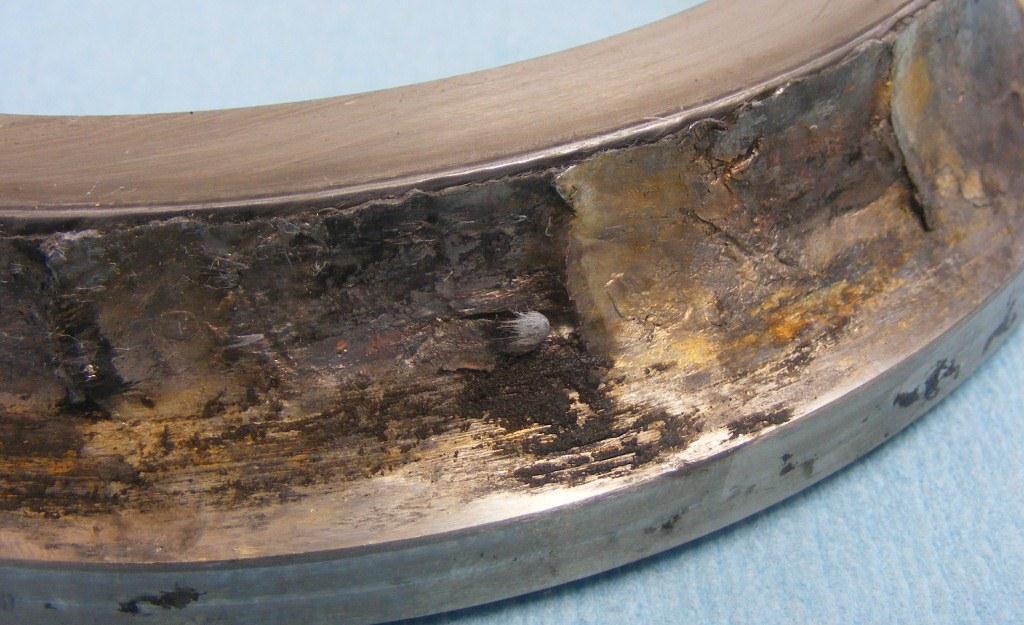
Slide title
An angular contact bearing inner ring with material deposition from the balls following seizure
Button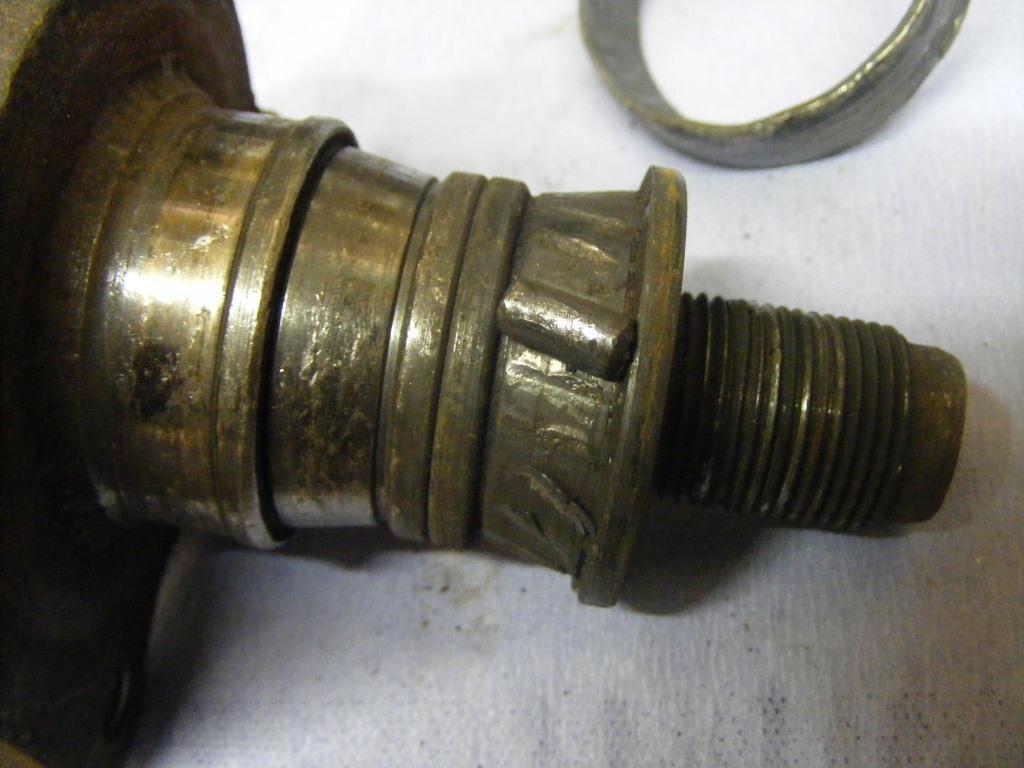
Slide title
Tapered roller assembly with skewed and friction welded roller on one cone caused by assembly with an excess of end float
Button
-
ELECTRICAL CORROSION IN BEARINGS
When electric current passes through a bearing, arcing and burning occur through the thin oil film at points of contact between the raceway and rolling elements. The points of contact are melted locally to form "fluting" or groove-like corrugations which can be seen by the naked eye. Magnification of these grooves reveals crater-like depressions which indicate melting by arcing.
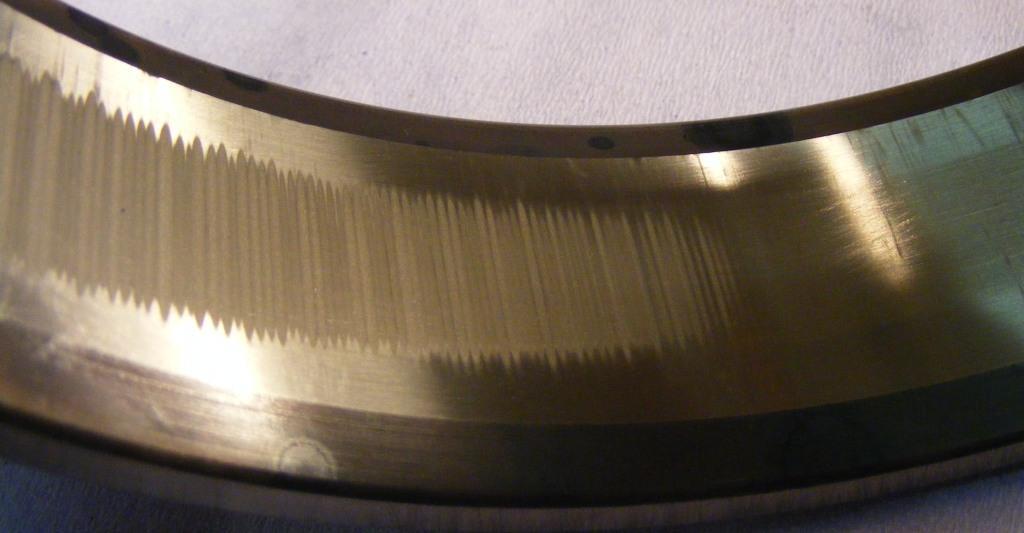
Slide title
Electric arc pitting in a cylindrical roller outer ring
Button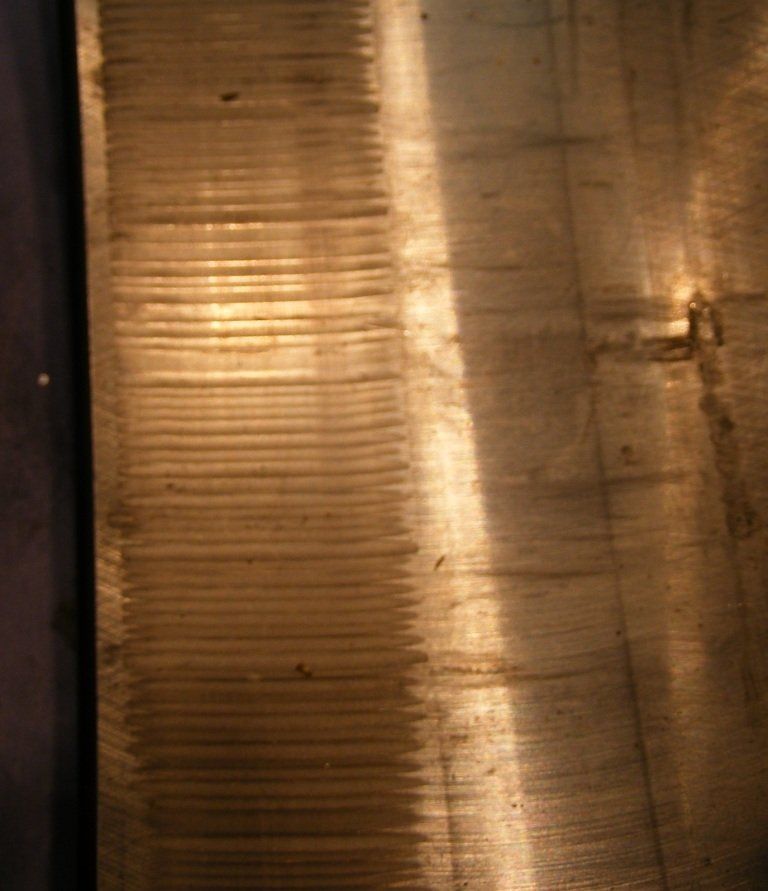
Slide title
Electrical pitting in a spherical roller bearing
Button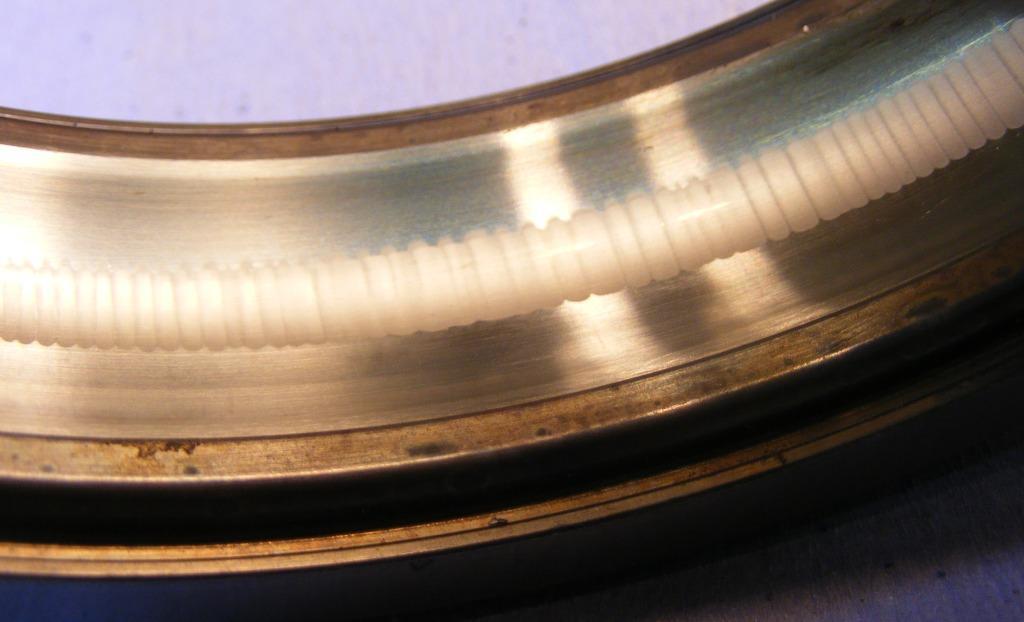
Slide title
Electrical Pitting in a Spherical Roller bearing
Button
-
BEARING RUST AND CORROSION
Bearing rust and corrosion are pits on the surface of rings and rolling elements and may occur at the rolling element pitch on the rings or over the entire bearing surfaces.
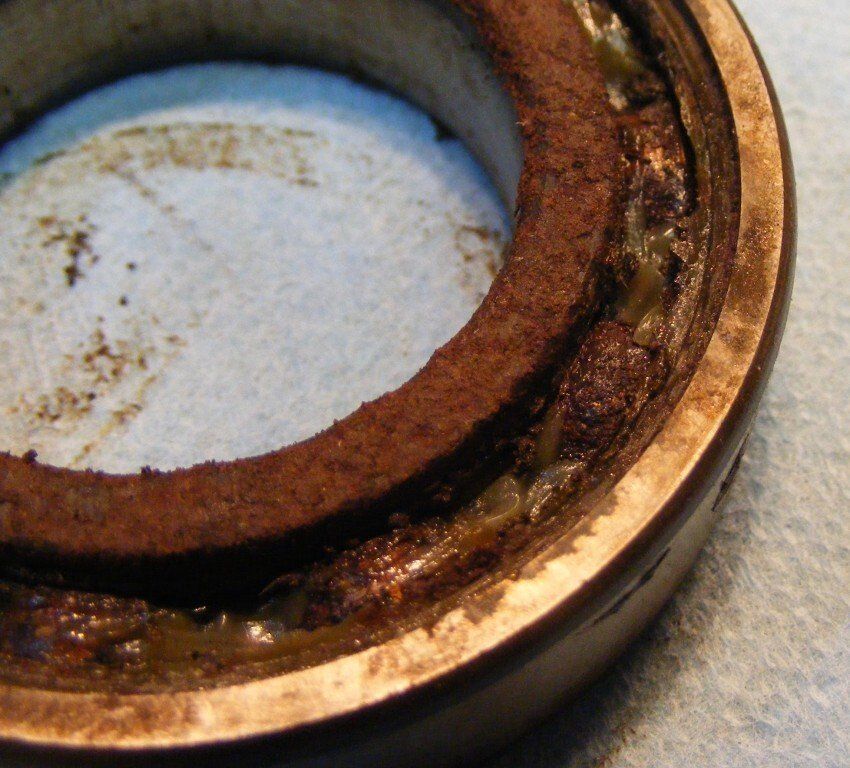
Slide title
Inner ring side face rusting caused by a build-up of moisture in the bearing housing close to this deep groove ball bearing. Water ingress into the bearing has caused further cage and other internal surface corrosion to occur
Button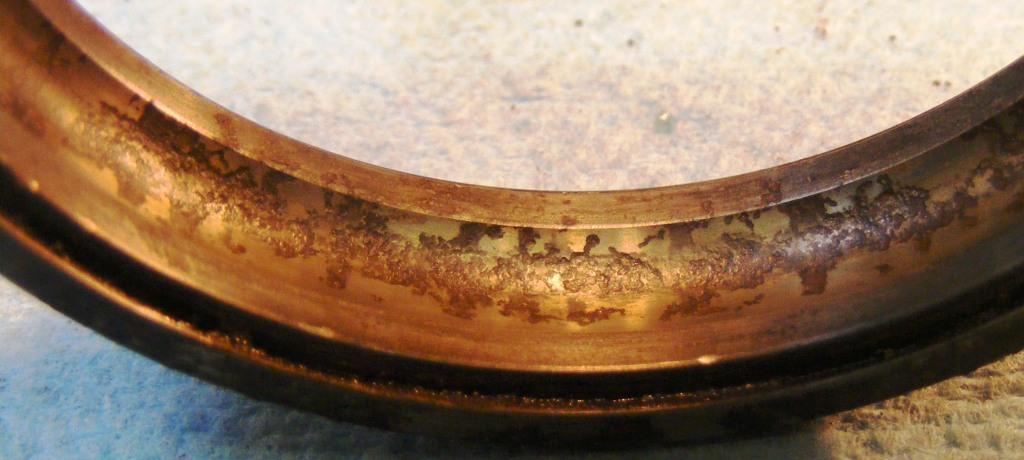
Slide title
Rust corrosion on a raceway caused by a bearing standing in moisture
Button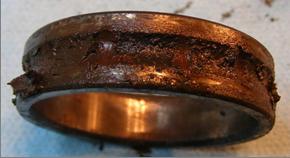
Slide title
Rusting of a ball bearing inner ring caused by moisture in the lubricant
Button
-
MOUNTING AND FITTING DAMAGE IN BEARINGS
Straight line scratches on surface of raceways or rolling elements caused during mounting or dismounting of bearing.

Slide title
Axial lines on the surface of a bearing roller caused by sliding during disassembly
Button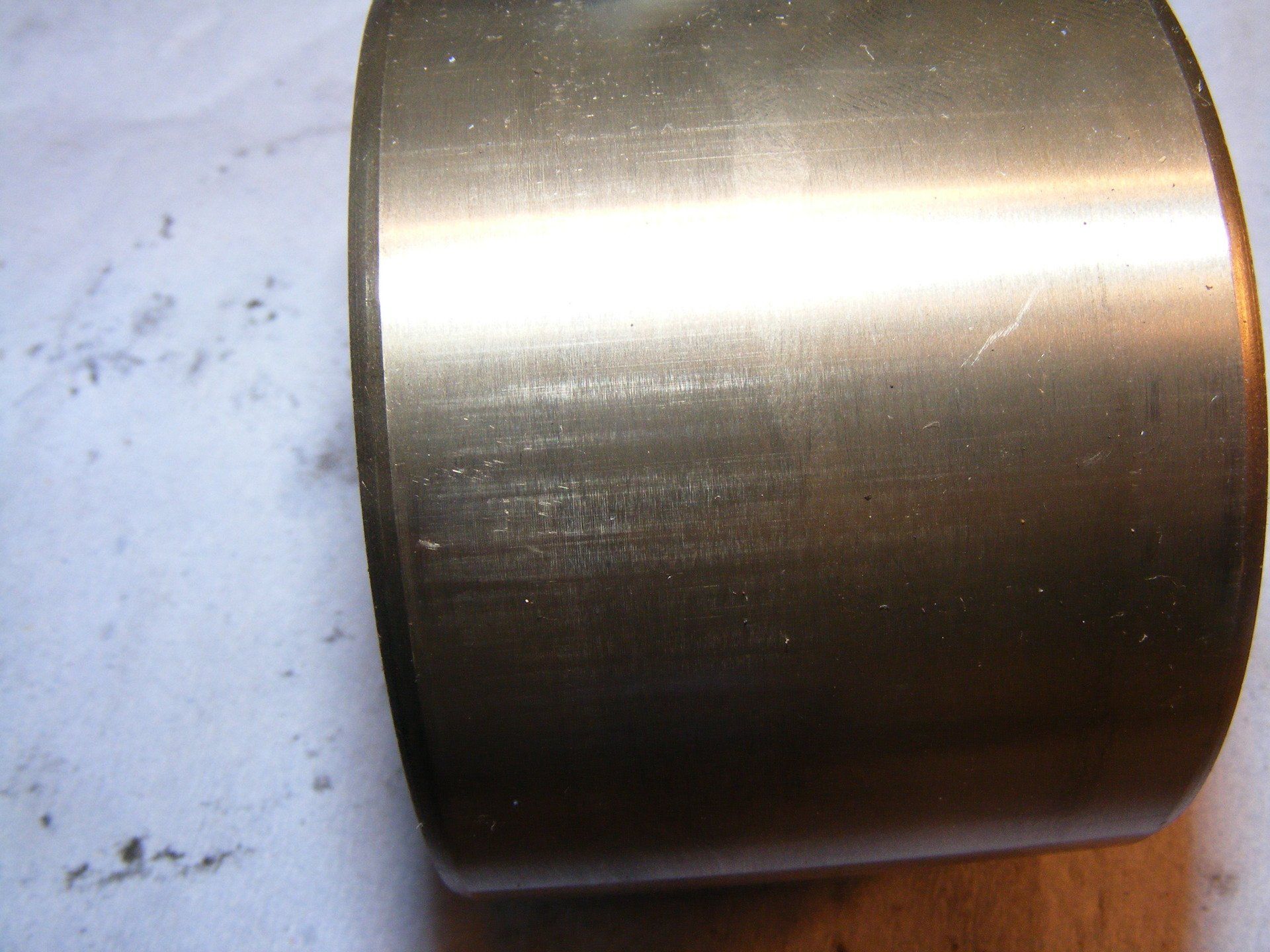
Slide title
Outer surface scratches caused during fitting. These marks are generally not detrimental to the bearing performance but do show that an interference fit was present between the bearing outer ring and the housing
Button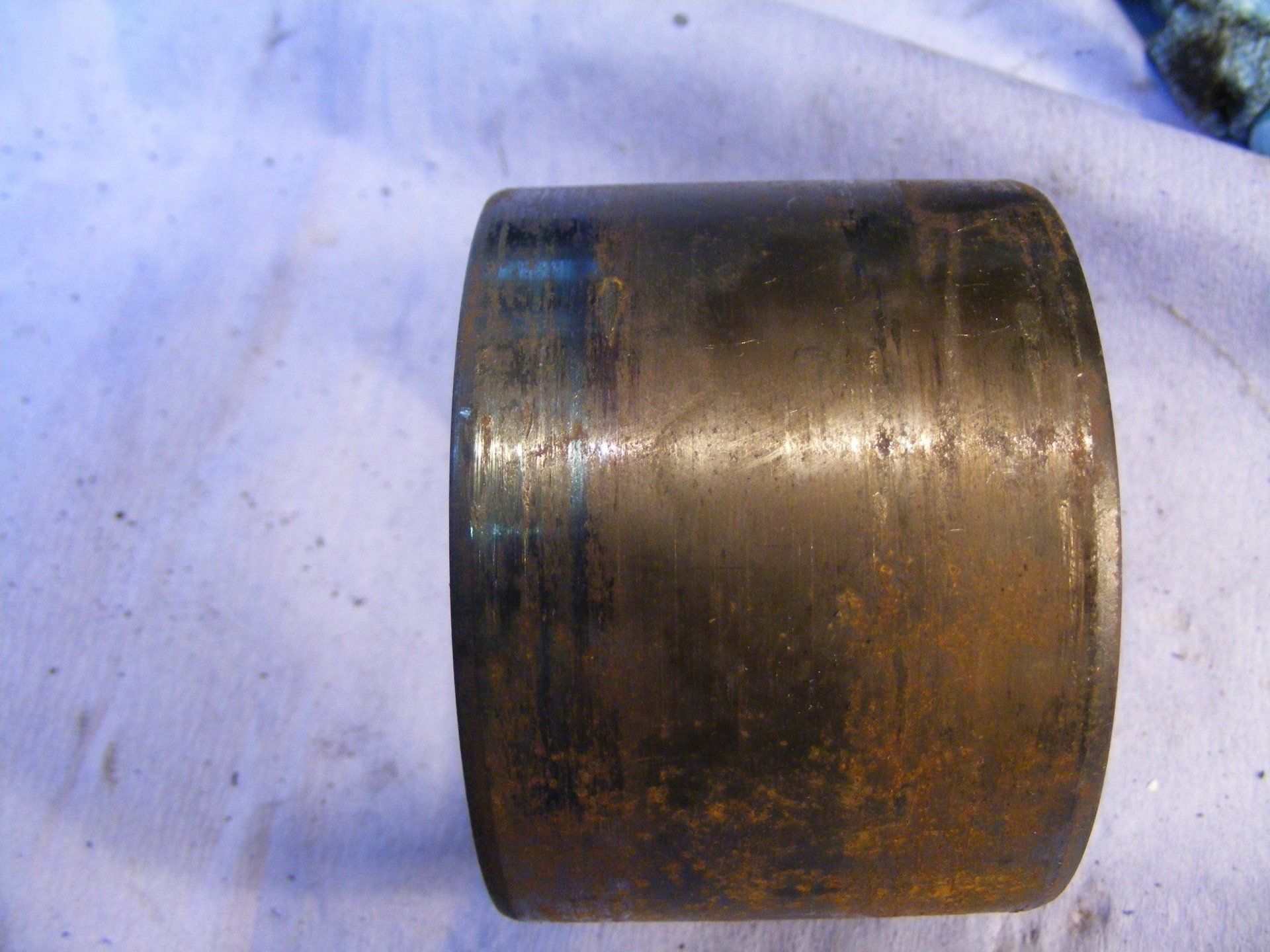
Slide title
Damaged outer surface of a double row Tapered Roller Bearing, Marks consistent with the ring having been loose in the application due to housing wear and dimensional inaccuracy. Discolouration to a deep blue caused by overheating at one side as a result of uneven loading
Button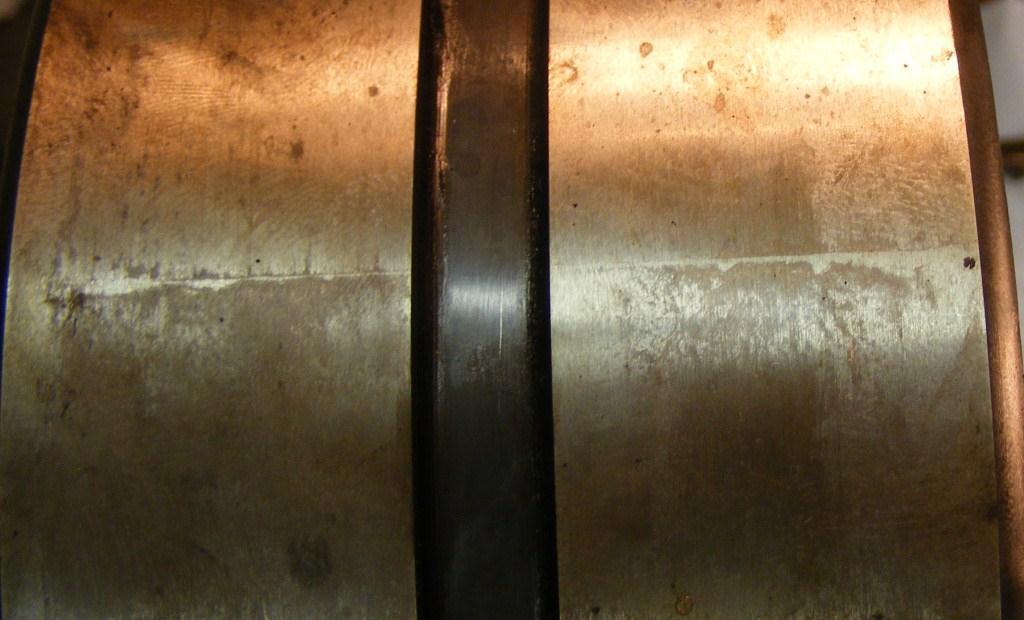
Slide title
Line on a spherical roller outside diameter caused by a split housing design
Button
-
DISCOLOURATION OF BEARINGS
Discolouration of cages, rolling elements and raceway rings occurs due to their reacting with lubricant at high temperature or as a result of corrosion.

Slide title
Discolouration on a Tapered roller caused by lubricant deterioration
Button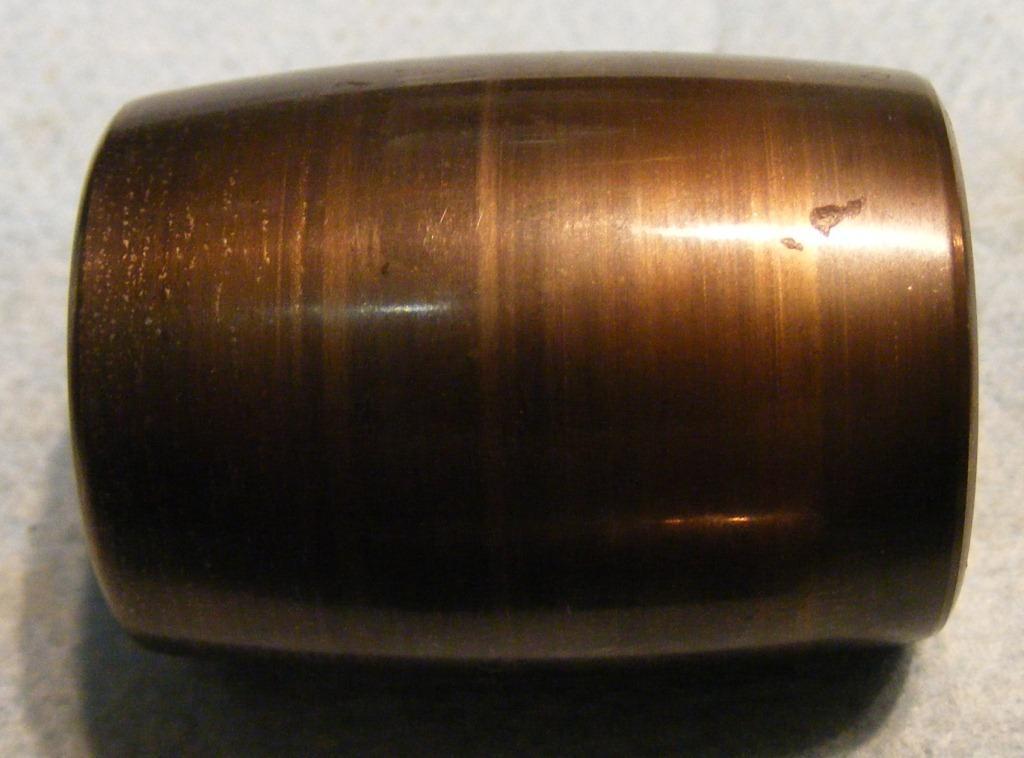
Slide title
Discolouration on a Spherical roller caused by contaminated Lubricant.
Button
Slide title
Heat discolouration on a tapered roller inner ring.
Button
-
HOUSING OR SHAFT DAMAGE
Wear, corrosion and burrs caused by repeated replacement of new bearings, a contaminated or moist environment or heavy handling during bearing removal.

Slide title
A wheel hub with a damaged abutment shoulder, a worn and tapered housing bore and excessive corrosion due to the environment the bearings were used in
Button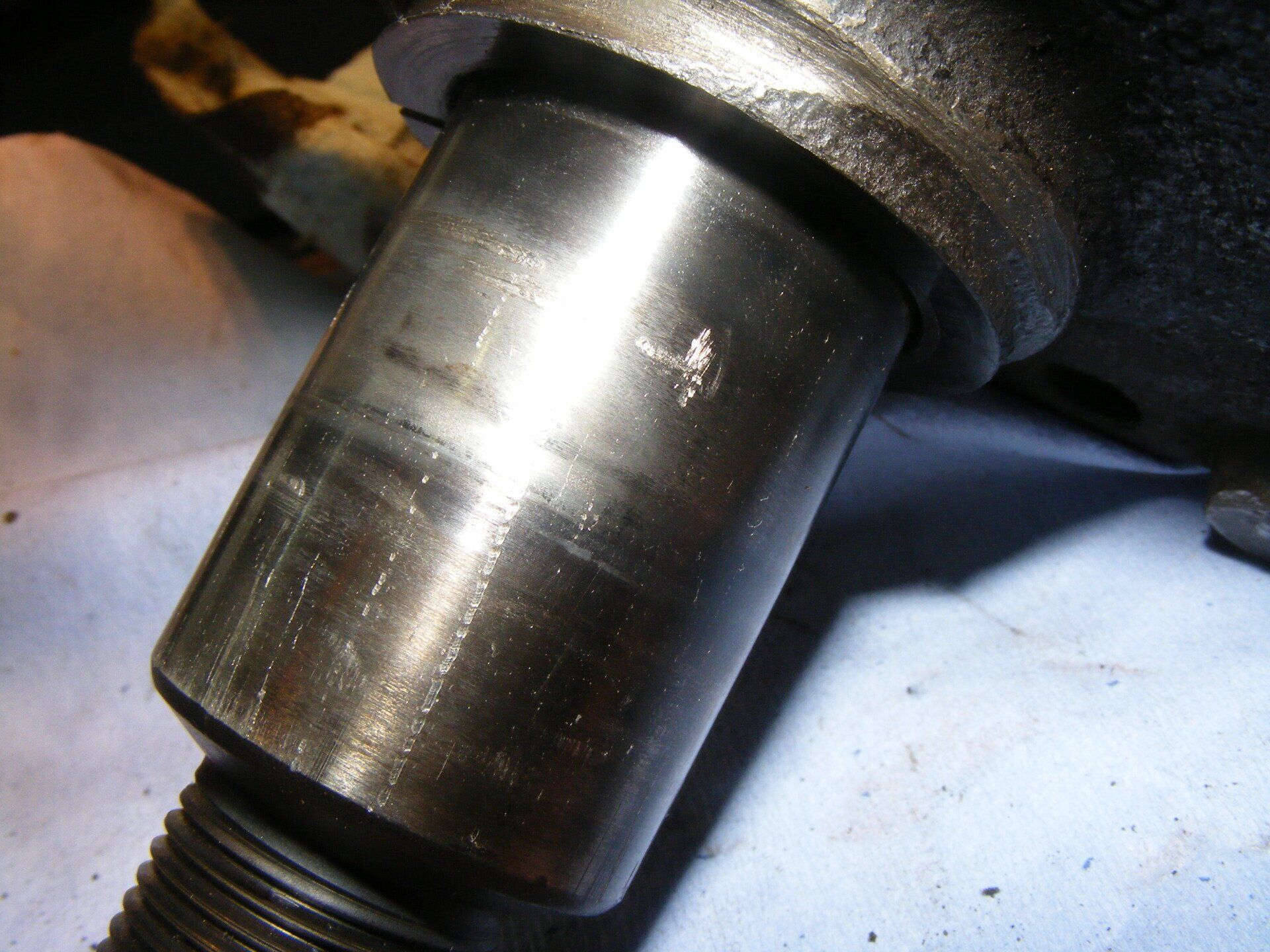
Slide title
A vehicle stub shaft with wear caused by inner ring rotation and pick up
Button
-
BEARING FLAKING OR WEARING FATIGUE
Flaking due to rolling fatigue occurs when small pieces of bearing material are lifted and broken off the smooth surface of the raceway or the rolling elements. This flaking causes regions with a rough and coarse texture.

Slide title
Fatigue damage in a loaded zone of a
tapered roller bearing inner ring
Button
Slide title
Flaking on the edge of a tapered roller inner ring
Button
Slide title
A spherical roller damaged as a result of flaking and fatigue
Button
Slide title
Flaking on a ball bearing outer ring raceway
Button
Slide title
Flaking on a ball bearing outer ring raceway
Button
Slide title
Fatigue at both sides of a crack in a Tapered roller cone
Button
-
BEARING PEELING
Dull or cloudy spots appear on the raceway surface along with light wearing. Tiny microscopic cracks are generated downward from these cloudy spots to a depth of 5-10 μm. Small particles of material then peel from the surface with areas of minor flaking starting to occur.

Slide title
A spherical roller raceway with surface material peeled away
Button
-
BEARING SCORING
Scoring is surface damage due to accumulated small seizures caused by sliding under improper lubrication or severe operating conditions. Linear damage appears circumferentially on the raceway and roller surfaces. Cycloidal shaped damage on the roller ends and scoring on the rib surface contacting roller ends also occur.

Slide title
A spherical roller central divider scored as a result of an ineffective lubricant film thickness being present
Button
Slide title
A prominent scoring mark caused by a lack of radial clearance during service rotation. Swirl shaped scuffing and scoring on the ends of a failed taper roller bearing
Button
-
SMEARING OF THE BEARING SURFACE
Smearing is surface damage which occurs from a collection of small seizures between bearing components caused by oil film rupture and/or sliding. Surface roughening occurs along with melting.

Slide title
A smeared end of a tapered rolled as a result of excessive sliding contact against the roller retaining rib
Button
Slide title
Smearing on the inner races of a duplex tapered roller
Button
-
FRACTURE OF THE BEARING
Fracture refers to small or large metallic pieces which were broken off due to excessive load or shock load acting locally on a rolling element, rib or section of a raceway ring.

Slide title
Fracture of a spherical roller bearing outer ring as a result of a high thrust impact load causing cracks
Button
Slide title
Cracking in the outer ring of an angular contact bearing
Button
-
CRACKS IN THE RACEWAY RING AND ROLLING ELEMENTS
Cracks in the raceway ring and rolling elements. Continued use under this condition leads to larger cracks or fractures

Slide title
Outer ring crack caused by a heavy impact through the rolling elements
Button
Slide title
Inner ring crack caused by excessive hoop stress
Button
-
BEARING CAGE DAMAGE, DEFORMATION, FRACTURE AND WEAR
Cage damage includes: Cage deformation, Fracture and Wear Fracture of cage pillars.

Slide title
Tapered roller cage with worn side pillars caused by the bearing having run in a reduced lubricant condition
Button
Slide title
Wear in a brass cage pocket due to low lubrication
Button
Slide title
An angular contact bearing cage deformed due to rubbing contact with other assembly parts
Button
Slide title
Wear of pocket surface. Brass cage pillar wear caused by lack of lubrication
Button
-
SEIZURE OF BEARINGS
When sudden overheating occurs during rotation, the bearing becomes discoloured. Then, the raceway rings, rolling elements, and cage will soften, melt and deform as damage accumulates.

Slide title
Tapered Roller Inner Rings distorted as a result of overloading and lack of lubrication
Button
Slide title
The remnants of rollers removed from a seized Taper Roller Bearing
Button
Slide title
Outer raceway from a seized tapered roller bearing
Button
Slide title
An angular contact bearing inner ring with material deposition from the balls following seizure
Button
Slide title
Tapered roller assembly with skewed and friction welded roller on one cone caused by assembly with an excess of end float
Button
-
ELECTRICAL CORROSION IN BEARINGS
When electric current passes through a bearing, arcing and burning occur through the thin oil film at points of contact between the raceway and rolling elements. The points of contact are melted locally to form "fluting" or groove-like corrugations which can be seen by the naked eye. Magnification of these grooves reveals crater-like depressions which indicate melting by arcing.

Slide title
Electric arc pitting in a cylindrical roller outer ring
Button
Slide title
Electrical pitting in a spherical roller bearing
Button
Slide title
Electrical Pitting in a Spherical Roller bearing
Button
-
BEARING RUST AND CORROSION
Bearing rust and corrosion are pits on the surface of rings and rolling elements and may occur at the rolling element pitch on the rings or over the entire bearing surfaces.

Slide title
Inner ring side face rusting caused by a build-up of moisture in the bearing housing close to this deep groove ball bearing. Water ingress into the bearing has caused further cage and other internal surface corrosion to occur
Button
Slide title
Rust corrosion on a raceway caused by a bearing standing in moisture
Button
Slide title
Rusting of a ball bearing inner ring caused by moisture in the lubricant
Button
-
PITTING OF THE BEARING ON THE ROLLING ELEMENT OR RACEWAY
Pitting has a dull lustre and appears on the rolling element surface or raceway surface.

Slide title
Light pitting as seen on the two sides of a spherical roller inner ring
Button
Slide title
Pitting around the circumference of a cylindrical roller inner ring
Button
-
DENTING AND "PEAR SKINNING" OF THE BEARING
Flaking due to rolling fatigue occurs when small pieces of bearing material are lifted and broken off the smooth surface of the raceway or the rolling elements. This flaking causes regions with a rough and coarse texture.

Slide title
Dented cross roller thrust bearing raceway caused by dirt ingress following a strip down and re assembly
Button
Slide title
Raceway damaged by contaminant in the lubricant
Button
Slide title
Pear skinning caused by metal debris from a fatigue failure being pressed onto the remainder of the contact surface
Button
Slide title
Fatigue occurring on a ball bearing inner ring due to stresses induced around an impact dent
Button
-
WEAR OF BEARINGS
Wear is surface deterioration due to sliding friction at the surface of the raceway, rolling elements, roller end faces, rib face, cage pockets, etc.

Slide title
Rotation and surface wear in the bore of a tapered roller bearing inner ring. The possible cause being that the shaft was damaged previously allowing movement to occur
Button
Slide title
Close up of a Tapered Roller nose with heavy burrs and rotational scuffing due to maladjustment of the bearing on the shaft
Button
-
FRETTING OF BEARINGS
Wear occurs due to repeated sliding between the two surfaces. Fretting occurs at fitting surface between raceway rings and the shaft or housing. Fretting corrosion is another term used to describe the reddish brown or black wear patterns often seen on old shafts and worn housings.

Slide title
Top surface of a thrust bearing showing sliding wear marks to one side of the ring as a result of unintended movement during service
Button
Slide title
Fitting marks and fretting corrosion caused by the bearing vibrating on the shaft
Button
Slide title
Fretting Corrosion and Fitting marks on the outside diameter of a spherical roller outside diameter
Button
-
FALSE BRINELLING
Among the different types of fretting, false brinelling is the occurrence of hollow spots that resemble brinell dents and are due to wear caused by vibration and swaying at the contact points between the rolling elements and raceway.

Slide title
False brinelling caused during transportation of the stationary component
Button
Slide title
False brinelling and scratches likely to have been caused during transportation of inappropriately packed bearings
Button
-
CREEP IN BEARINGS
Creep is the phenomenon in bearings where relative slippage occurs between fitting surfaces and thereby creates a clearance between the surfaces. Creep causes a shiny appearance, occasionally with scoring or wear.

Slide title
Inner ring bore creep due to a worn shaft
Button
-
MOUNTING AND FITTING DAMAGE IN BEARINGS
Straight line scratches on surface of raceways or rolling elements caused during mounting or dismounting of bearing.

Slide title
Axial lines on the surface of a bearing roller caused by sliding during disassembly
Button
Slide title
Outer surface scratches caused during fitting. These marks are generally not detrimental to the bearing performance but do show that an interference fit was present between the bearing outer ring and the housing
Button
Slide title
Damaged outer surface of a double row Tapered Roller Bearing, Marks consistent with the ring having been loose in the application due to housing wear and dimensional inaccuracy. Discolouration to a deep blue caused by overheating at one side as a result of uneven loading
Button
Slide title
Line on a spherical roller outside diameter caused by a split housing design
Button
-
DISCOLORATION OF BEARINGS
Discoloration of cages, rolling elements and raceway rings occurs due to their reacting with lubricant at high temperature or as a result of corrosion.

Slide title
Axial lines on the surface of a bearing roller caused by sliding during disassembly
Button
Slide title
Outer surface scratches caused during fitting. These marks are generally not detrimental to the bearing performance but do show that an interference fit was present between the bearing outer ring and the housing
Button
Slide title
Damaged outer surface of a double row Tapered Roller Bearing, Marks consistent with the ring having been loose in the application due to housing wear and dimensional inaccuracy. Discolouration to a deep blue caused by overheating at one side as a result of uneven loading
Button
-
HOUSING OR SHAFT DAMAGE
Wear, corrosion and burrs caused by repeated replacement of new bearings, a contaminated or moist environment or heavy handling during bearing removal.

Slide title
A wheel hub with a damaged abutment shoulder, a worn and tapered housing bore and excessive corrosion due to the environment the bearings were used in
Button
Slide title
A vehicle stub shaft with wear caused by inner ring rotation and pick up
Button

